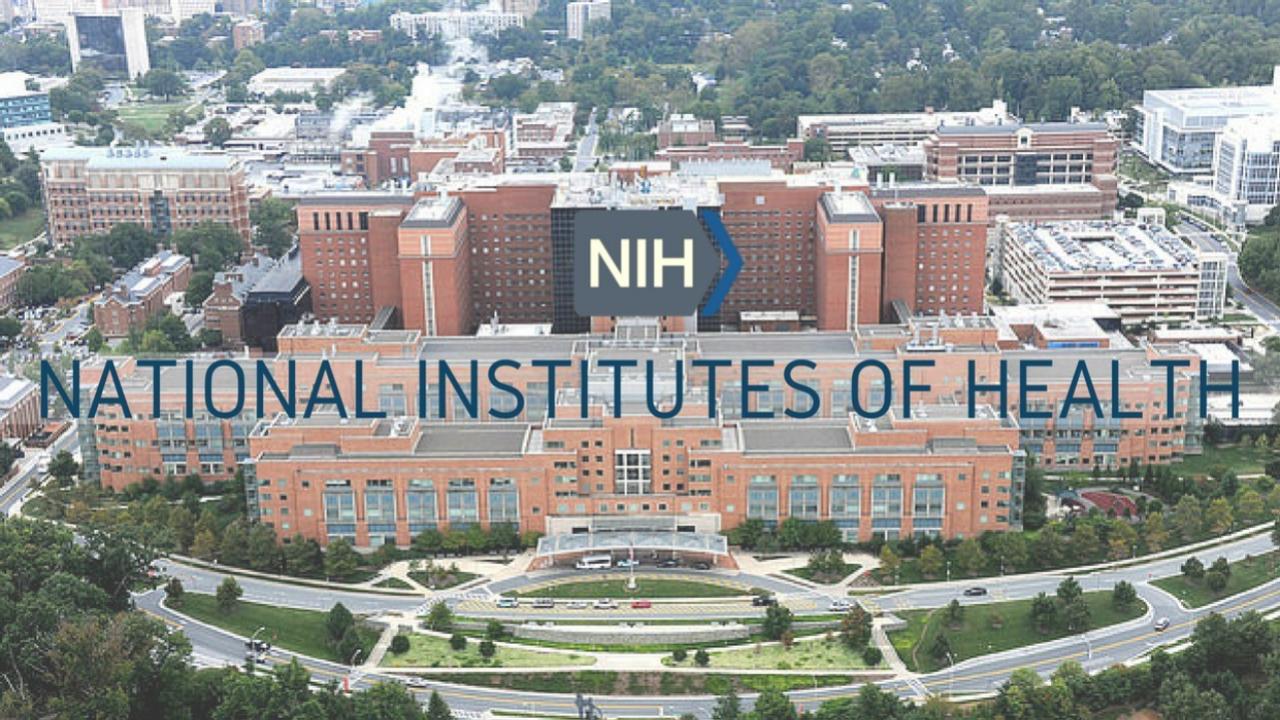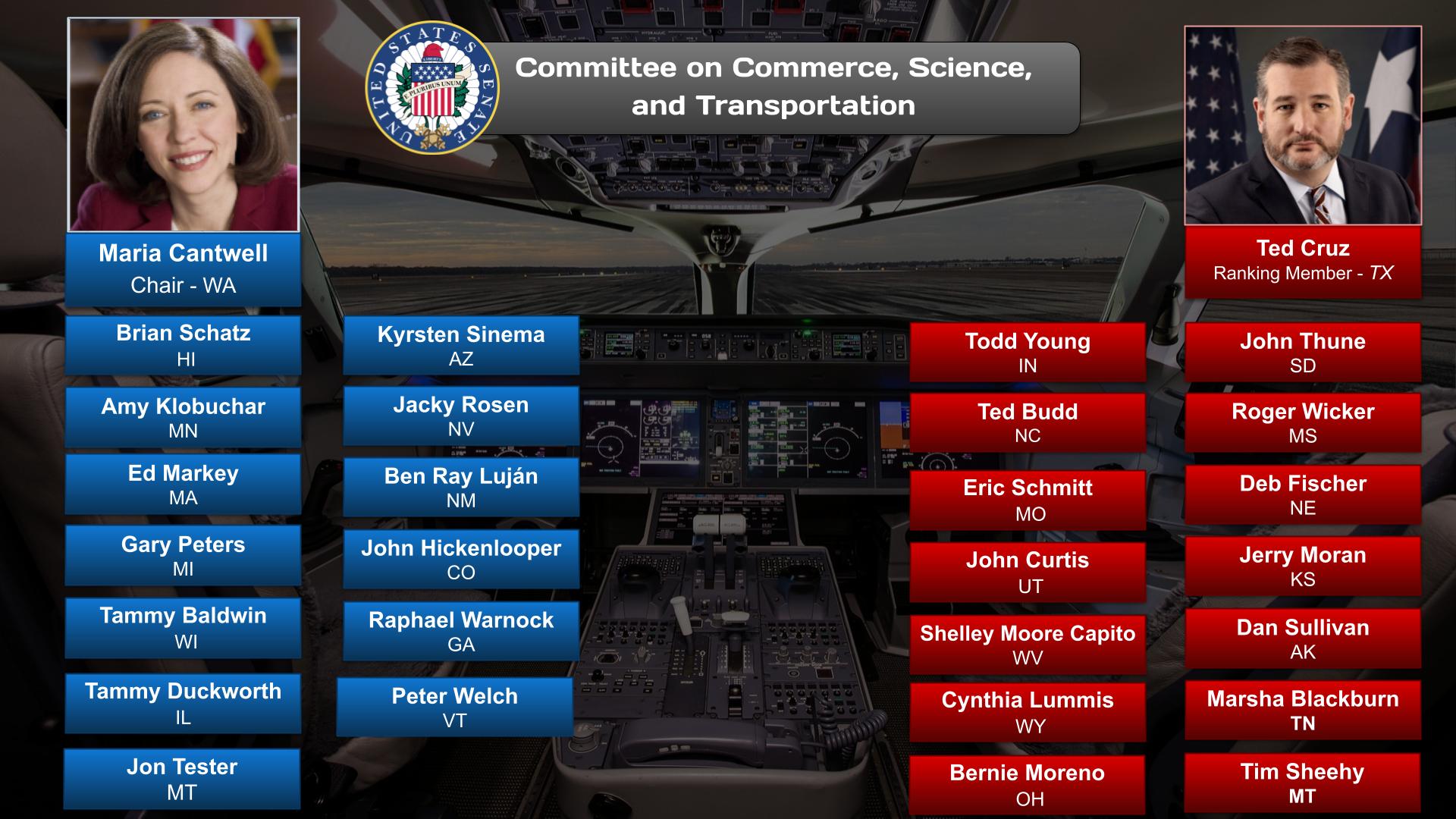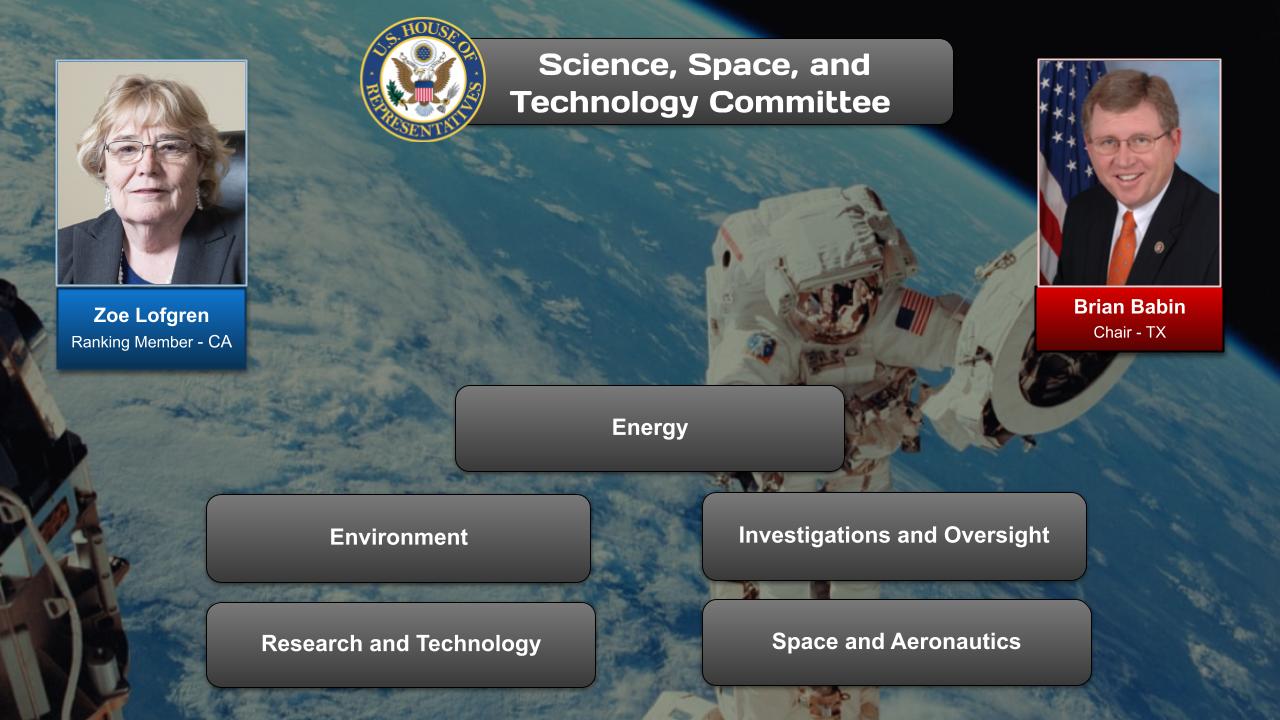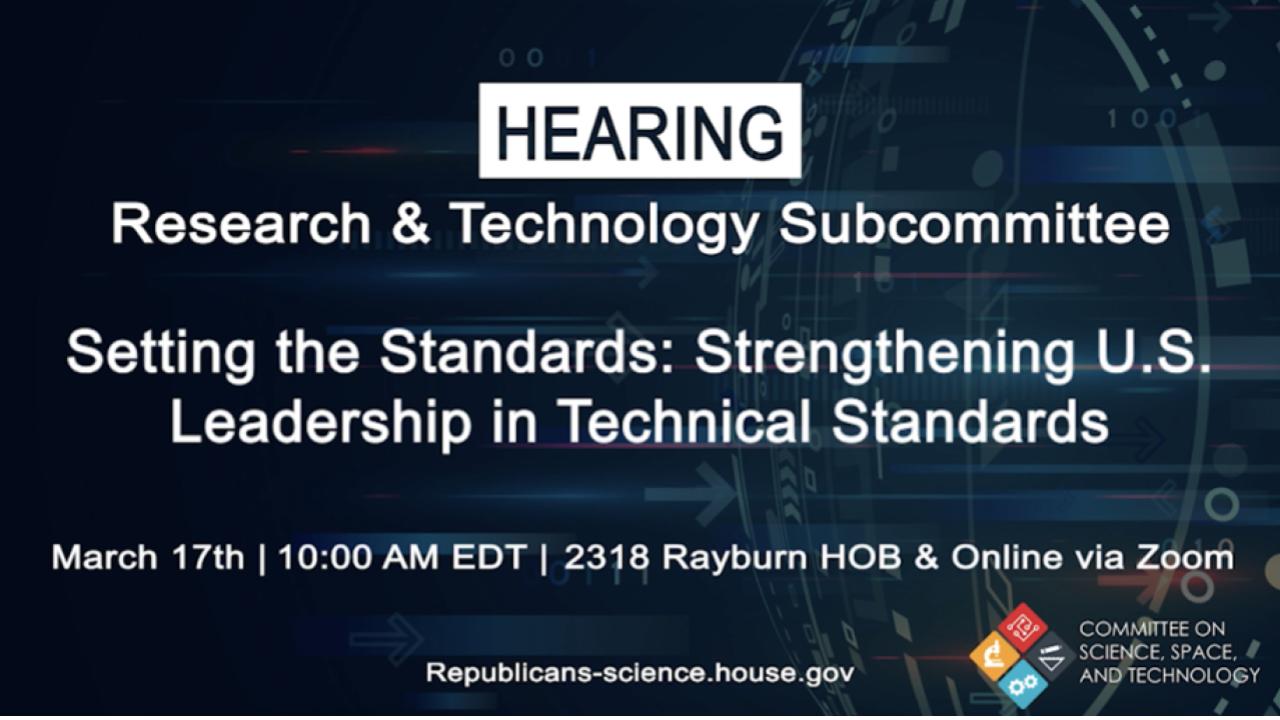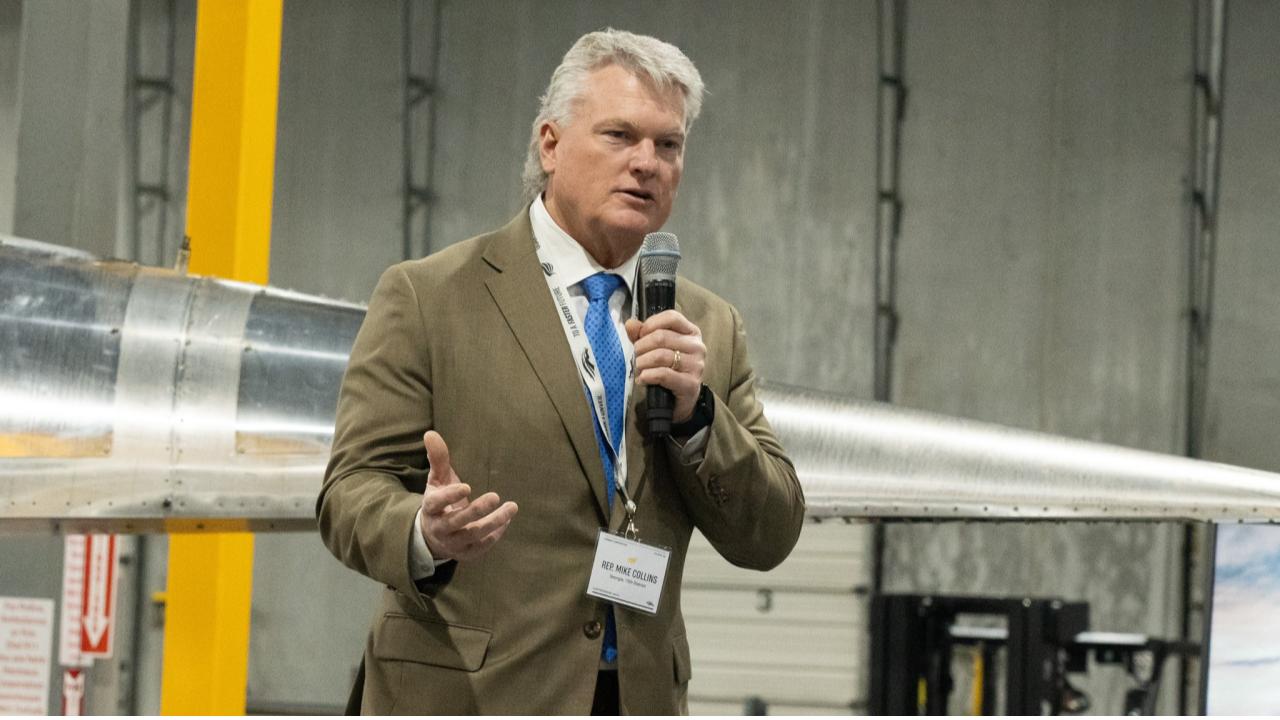Summary
The Regulating AGI category in the US onAir hub has related posts on government agencies and departments and committees and their Chairs. In addition, the AGI Policy hub has more detailed posts on AGI regulation issues and efforts.
Note: The Trump administration is in the early phases of clarifying its policy approach to AI and AGI and many of the previous committees and legislative efforts no longer have active websites (some of the previous efforts can be found in this post).
Artificial General Intelligence (AGI) is a hypothetical type of intelligent agent which, if realized, could learn to accomplish any intellectual task that human beings or animals can perform. Alternatively, AGI has been defined as an autonomous system that surpasses human capabilities in the majority of economically valuable tasks. Creating AGI is a primary goal of some artificial intelligence research and of companies such as OpenAI, DeepMind, and Anthropic. AGI is a common topic in science fiction and futures studies.
- In the ‘About’ section of this post is an overview of the issues or challenges, potential solutions, and web links. Other sections have information on relevant legislation, committees, agencies, programs in addition to information on the judiciary, nonpartisan & partisan organizations, and a wikipedia entry.
- To participate in ongoing forums, ask the post’s curators questions, and make suggestions, scroll to the ‘Discuss’ section at the bottom of each post or select the “comment” icon.
Sciencephile the AI – 11/03/2023 (09:48)
OnAir Post: US AGI Policy
News
Latest
GMU (Mason News) – March 3, 2025
At last week’s Board of Visitors meeting, George Mason University’s Vice President and Chief AI Officer Amarda Shehu rolled out a new model for universities to advance a responsible approach to harnessing artificial intelligence (AI) and drive societal impact. George Mason’s model, called AI2Nexus, is building a nexus of collaboration and resources on campus, throughout the region with our vast partnerships, and across the state.
AI2Nexus is based on four key principles: “Integrating AI” to transform education, research, and operations; “Inspiring with AI” to advance higher education and learning for the future workforce; “Innovating with AI” to lead in responsible AI-enabled discovery and advancements across disciplines; and “Impacting with AI” to drive partnerships and community engagement for societal adoption and change.
Shehu said George Mason can harness its own ecosystem of AI teaching, cutting-edge research, partnerships, and incubators for entrepreneurs to establish a virtuous cycle between foundational and user-inspired AI research within ethical frameworks.
As part of this effort, the university’s AI Task Force, established by President Gregory Washington last year, has developed new guidelines to help the university navigate the rapidly evolving landscape of AI technologies, which are available at gmu.edu/ai-guidelines.
Further, Information Technology Services (ITS) will roll out the NebulaONE academic platform equipping every student, staff, and faculty member with access to hundreds of cutting-edge Generative AI models to support access, performance, and data protection at scale.
“We are anticipating that AI integration will allow us to begin to evaluate and automate some routine processes reducing administrative burdens and freeing up resources for mission-critical activities,” added Charmaine Madison, George Mason’s vice president of information services and CIO.
George Mason is already equipping students with AI skills as a leader in developing AI-ready talent ready to compete and new ideas for critical sectors like cybersecurity, public health, and government. In the classroom, the university is developing courses and curriculums to better prepare our students for a rapidly changing world.
In spring 2025, the university launched a cross-disciplinary graduate course, AI: Ethics, Policy, and Society, and in fall 2025, the university is debuting a new undergraduate course open to all students, AI4All: Understanding and Building Artificial Intelligence. A master’s in computer science and machine learning, an Ethics and AI minor for undergraduates of all majors, and a Responsible AI Graduate Certificate are more examples of Mason’s mission to innovate AI education. New academies are also in development, and the goal is to build an infrastructure of more than 100 active core AI and AI-related courses across George Mason’s colleges and programs.
The university will continue to host workshops, conferences, and public forums to shape the discourse on AI ethics and governance while forging deep and meaningful partnerships with industry, government, and community organizations to offer academies to teach and codevelop technologies to meet our global society needs. State Council of Higher Education for Virginia (SCHEV) will partner with the university to host an invite-only George Mason-SCHEV AI in Education Summit on May 20-21 on the Fairfax Campus.
Virginia Governor Glenn Youngkin has appointed Jamil N. Jaffer, the founder and executive director of the National Security Institute (NSI) at George Mason’s Antonin Scalia Law School, to the Commonwealth’s new AI Task Force, which will work with legislators to regulate rapidly advancing AI technology.
The Ezra Klein Show – March 4, 2025 (01:03:00)
Artificial general intelligence — an A.I. system that can beat humans at almost any cognitive task – is arriving in just a couple of years. That’s what people tell me — people who work in A.I. labs, researchers who follow their work, former White House officials. A lot of these people have been calling me over the last couple of months trying to convey the urgency. This is coming during President Trump’s term, they tell me. We’re not ready.
One of the people who reached out to me was Ben Buchanan, the top adviser on A.I. in the Biden White House. And I thought it would be interesting to have him on the show for a couple reasons: He’s not connected to an A.I. lab, and he was at the nerve center of policymaking on A.I. for years. So what does he see coming? What keeps him up at night? And what does he think the Trump administration needs to do to get ready for the A.G.I. – or something like A.G.I. – he believes is right on the horizon?
PBS NewsHour – October 10, 2024 (06:09)
The Nobel Prize in chemistry went to three scientists for groundbreaking work using artificial intelligence to advance biomedical and protein research. AlphaFold uses databases of protein structures and sequences to predict and even design protein structures. It speeds up a months or years-long process to mere hours or minutes. Amna Nawaz discussed more with one of the winners, Demis Hassabis.
Chemistry World, Jamie Durrani – October 9, 2024
The developers of computational tools that can be used to accurately design and predict protein structures have been recognised with this year’s Nobel prize in chemistry. The Nobel committee noted that these tools have led to a revolution in biological chemistry and are today used by millions of researchers around the world.
Demis Hassabis and John Jumper from Google’s DeepMind team received one half of the prize for their work on AlphaFold and AlphaFold2 – programs that dramatically increased the accuracy of protein structure predictions. In 2021, the team released 350,000 structures including those of all 20,000 proteins in the human proteome. In 2022 they provided the structures of a further 200 million proteins – almost every protein known to science.
The Conversation – October 10, 2024
The 2024 Nobel Prizes in physics and chemistry have given us a glimpse of the future of science. Artificial intelligence (AI) was central to the discoveries honoured by both awards. You have to wonder what Alfred Nobel, who founded the prizes, would think of it all.
We are certain to see many more Nobel medals handed to researchers who made use of AI tools. As this happens, we may find the scientific methods honoured by the Nobel committee depart from straightforward categories like “physics”, “chemistry” and “physiology or medicine”.
We may also see the scientific backgrounds of recipients retain a looser connection with these categories. This year’s physics prize was awarded to the American John Hopfield, at Princeton University, and British-born Geoffrey Hinton, from the University of Toronto. While Hopfield is a physicist, Hinton studied experimental psychology before gravitating to AI.
AI Upload – August 26, 2024 (27:29)
Ex-Google CEO Eric Schmidt recently made headlines with some controversial comments about AI during an interview conduced at Stanford University. This interview was taken down at his request after he admitted to misspeaking. But did Eric Schmidt actually let on to something big coming in terms of the future of AI?
Spotlight
GMU (Mason News) – March 3, 2025
At last week’s Board of Visitors meeting, George Mason University’s Vice President and Chief AI Officer Amarda Shehu rolled out a new model for universities to advance a responsible approach to harnessing artificial intelligence (AI) and drive societal impact. George Mason’s model, called AI2Nexus, is building a nexus of collaboration and resources on campus, throughout the region with our vast partnerships, and across the state.
AI2Nexus is based on four key principles: “Integrating AI” to transform education, research, and operations; “Inspiring with AI” to advance higher education and learning for the future workforce; “Innovating with AI” to lead in responsible AI-enabled discovery and advancements across disciplines; and “Impacting with AI” to drive partnerships and community engagement for societal adoption and change.
Shehu said George Mason can harness its own ecosystem of AI teaching, cutting-edge research, partnerships, and incubators for entrepreneurs to establish a virtuous cycle between foundational and user-inspired AI research within ethical frameworks.
As part of this effort, the university’s AI Task Force, established by President Gregory Washington last year, has developed new guidelines to help the university navigate the rapidly evolving landscape of AI technologies, which are available at gmu.edu/ai-guidelines.
Further, Information Technology Services (ITS) will roll out the NebulaONE academic platform equipping every student, staff, and faculty member with access to hundreds of cutting-edge Generative AI models to support access, performance, and data protection at scale.
“We are anticipating that AI integration will allow us to begin to evaluate and automate some routine processes reducing administrative burdens and freeing up resources for mission-critical activities,” added Charmaine Madison, George Mason’s vice president of information services and CIO.
George Mason is already equipping students with AI skills as a leader in developing AI-ready talent ready to compete and new ideas for critical sectors like cybersecurity, public health, and government. In the classroom, the university is developing courses and curriculums to better prepare our students for a rapidly changing world.
In spring 2025, the university launched a cross-disciplinary graduate course, AI: Ethics, Policy, and Society, and in fall 2025, the university is debuting a new undergraduate course open to all students, AI4All: Understanding and Building Artificial Intelligence. A master’s in computer science and machine learning, an Ethics and AI minor for undergraduates of all majors, and a Responsible AI Graduate Certificate are more examples of Mason’s mission to innovate AI education. New academies are also in development, and the goal is to build an infrastructure of more than 100 active core AI and AI-related courses across George Mason’s colleges and programs.
The university will continue to host workshops, conferences, and public forums to shape the discourse on AI ethics and governance while forging deep and meaningful partnerships with industry, government, and community organizations to offer academies to teach and codevelop technologies to meet our global society needs. State Council of Higher Education for Virginia (SCHEV) will partner with the university to host an invite-only George Mason-SCHEV AI in Education Summit on May 20-21 on the Fairfax Campus.
Virginia Governor Glenn Youngkin has appointed Jamil N. Jaffer, the founder and executive director of the National Security Institute (NSI) at George Mason’s Antonin Scalia Law School, to the Commonwealth’s new AI Task Force, which will work with legislators to regulate rapidly advancing AI technology.
The Ezra Klein Show – March 4, 2025 (01:03:00)
Artificial general intelligence — an A.I. system that can beat humans at almost any cognitive task – is arriving in just a couple of years. That’s what people tell me — people who work in A.I. labs, researchers who follow their work, former White House officials. A lot of these people have been calling me over the last couple of months trying to convey the urgency. This is coming during President Trump’s term, they tell me. We’re not ready.
One of the people who reached out to me was Ben Buchanan, the top adviser on A.I. in the Biden White House. And I thought it would be interesting to have him on the show for a couple reasons: He’s not connected to an A.I. lab, and he was at the nerve center of policymaking on A.I. for years. So what does he see coming? What keeps him up at night? And what does he think the Trump administration needs to do to get ready for the A.G.I. – or something like A.G.I. – he believes is right on the horizon?
PBS NewsHour – October 10, 2024 (06:09)
The Nobel Prize in chemistry went to three scientists for groundbreaking work using artificial intelligence to advance biomedical and protein research. AlphaFold uses databases of protein structures and sequences to predict and even design protein structures. It speeds up a months or years-long process to mere hours or minutes. Amna Nawaz discussed more with one of the winners, Demis Hassabis.
The Conversation – October 10, 2024
The 2024 Nobel Prizes in physics and chemistry have given us a glimpse of the future of science. Artificial intelligence (AI) was central to the discoveries honoured by both awards. You have to wonder what Alfred Nobel, who founded the prizes, would think of it all.
We are certain to see many more Nobel medals handed to researchers who made use of AI tools. As this happens, we may find the scientific methods honoured by the Nobel committee depart from straightforward categories like “physics”, “chemistry” and “physiology or medicine”.
We may also see the scientific backgrounds of recipients retain a looser connection with these categories. This year’s physics prize was awarded to the American John Hopfield, at Princeton University, and British-born Geoffrey Hinton, from the University of Toronto. While Hopfield is a physicist, Hinton studied experimental psychology before gravitating to AI.
AI Upload – August 26, 2024 (27:29)
Ex-Google CEO Eric Schmidt recently made headlines with some controversial comments about AI during an interview conduced at Stanford University. This interview was taken down at his request after he admitted to misspeaking. But did Eric Schmidt actually let on to something big coming in terms of the future of AI?
ReadWrite – October 9, 2024

- Geoffrey Hinton and John Hopfield won the Nobel Prize in Physics for AI and machine learning innovations.
- Their foundational work enables advancements in artificial neural networks and deep learning.
- Hinton expressed surprise at the award, highlighting AI’s potential to exceed human intellectual capabilities.
Geoffrey Hinton and John Hopfield have been awarded the Nobel Prize in Physics, specifically for their work on artificial intelligence (AI) and machine learning.
British-Canadian Professor Hinton is sometimes referred to as the “Godfather of AI,” while American Professor John Hopfield is a professor at Princeton University in the US. The Royal Swedish Academy of Sciences said that the pair were jointly awarded “for foundational discoveries and inventions that enable machine learning with artificial neural networks.”
AI Supremacy Newsletter, Michael Spencer and Dean W. Ball – June 19, 2024
A closer look at the United States Senate’s AI Policy Agenda
How will the U.S. regulate AI in the long run? A bipartisan working group led by Senate Majority Leader Chuck Schumer (D-N.Y.) and including Sens. Martin Heinrich (D-N.M.), Mike Rounds (R-S.D.), and Todd Young (R-Ind.) released this first step on May, 17th, 2024.
According to Politico, most voters are worried about the use of AI in this year’s elections, but have mixed feelings on what to do about it. The AI Roadmap, titled “A Roadmap for Artificial Intelligence Policy in the U.S. Senate,” is the culmination of extensive discussions, stakeholder meetings, and nine AI Insight Forums.
The Roadmap outlines several key objectives and policy priorities that merit bipartisan consideration in the Senate. These include:
- Increasing funding for AI innovation: To maintain global competitiveness and US leadership in AI and perform cutting-edge AI research and development
- Enforcing existing laws and addressing unintended bias: Prioritizing the development of standards for testing potential AI harms and developing use case-specific requirements for AI transparency and explainability
- Workforce considerations: Addressing the impact of AI on the workforce, including job displacement and the need for upskilling and retraining workers
- National security: Leading globally in the adoption of emerging technologies and addressing national security threats, risks, and opportunities presented by AI
- Deepfakes and content creation: Addressing challenges posed by deepfakes — media that has been digitally manipulated to replace one person’s likeness with that of another, non-consensual intimate images, and the impacts of AI on professional content creators and the journalism industry
- Data privacy: Establishing a strong comprehensive federal data privacy framework
- Mitigating long-term risks: Addressing the threat of potential long-term risk scenarios associated with AI
Digital Spirts, Matthew Mittelsteadt – June 19, 2024
Last week Roll Call reported “A handful of lawmakers say they plan to press the issue of the threat to humans posed by generative artificial intelligence after a recent bipartisan Senate report largely sidestepped the matter.”1 Specifically, Senators Mitt Romney (R-N.M.), Jack Reed, (D-R.I.), Jerry Moran ( R-Kan.), and Angus King, (I-Maine), joined by a handful of reps on the House side, have begun active calls for Congress to take AI risk seriously.
Trying to chart a path forward, the legislators have published a “Framework For Mitigating Extreme AI Risks.” In brief this framework proposes that developers of models trained on an “enormous amount of computing power” and are “broadly capable; general-purpose and able to complete a variety of downstream tasks; or are intended to be used for bioengineering, chemical engineering, cybersecurity, or nuclear development” must:
1. Implement so called ‘Know your customer requirements,’ that is vet, know, and report customers, especially foreign persons.
2. Notify an “oversight entity” when developing a highly capable model while also incorporating certain safeguards and cybersecurity standards into development.
3. Go through evaluation and obtain a license prior to release to try and prevent models from yielding “bioengineering, chemical engineering, cybersecurity, or nuclear development” risks. License acess would be tiered according to perceived risk levels.
The framework also proposes the creation of a new agency, or investiture of new powers in an exsisting agency or council, to implement these regulations.
Future of Life Institute, US Policy Team
On May 15, 2024, the Senate AI Working Group released “Driving U.S. Innovation in Artificial Intelligence: A Roadmap for Artificial Intelligence Policy in the United States Senate,” which synthesized the findings from the Senate AI Insight Forums into a set of recommendations for Senate action moving forward. The Senate’s sustained efforts to identify and remain abreast of the key issues raised by this rapidly evolving technology are commendable, and the Roadmap demonstrates a remarkable grasp of the critical questions Congress must grapple with as AI matures and permeates our everyday lives.
The need for regulation of the highest-risk AI systems is urgent. The pace of AI advancement has been frenetic, with Big Tech locked in an out-of-control race to develop increasingly powerful, and increasingly risky, AI systems. Given the more deliberate pace of the legislative process, we remain concerned that the Roadmap’s deference to committees for the development of policy frameworks could delay the passage of substantive legislation until it is too late for effective policy intervention.
To expedite the process of enacting meaningful regulation of AI, we offer the following actionable recommendations for such policy frameworks that can form the basis of legislation to reduce risks, foster innovation, secure wellbeing, and strengthen global leadership.
DHS – April 26, 2024
Group Chaired by Secretary Mayorkas Will Consider Ways to Promote Safe and Secure Use of AI in our Nation’s Critical Infrastructure
oday, the Department of Homeland Security announced the establishment of the Artificial Intelligence Safety and Security Board (the Board). The Board will advise the Secretary, the critical infrastructure community, other private sector stakeholders, and the broader public on the safe and secure development and deployment of AI technology in our nation’s critical infrastructure. The Board will develop recommendations to help critical infrastructure stakeholders, such as transportation service providers, pipeline and power grid operators, and internet service providers, more responsibly leverage AI technologies. It will also develop recommendations to prevent and prepare for AI-related disruptions to critical services that impact national or economic security, public health, or safety.
President Biden directed Secretary Alejandro N. Mayorkas to establish the Board, which includes 22 representatives from a range of sectors, including software and hardware companies, critical infrastructure operators, public officials, the civil rights community, and academia. The inaugural members of the Board are:
- Sam Altman, CEO, OpenAI;
- Dario Amodei, CEO and Co-Founder, Anthropic;
- Ed Bastian, CEO, Delta Air Lines;
- Rumman Chowdhury, Ph.D., CEO, Humane Intelligence;
- Alexandra Reeve Givens, President and CEO, Center for Democracy and Technology
- Bruce Harrell, Mayor of Seattle, Washington; Chair, Technology and Innovation Committee, United States Conference of Mayors;
- Damon Hewitt, President and Executive Director, Lawyers’ Committee for Civil Rights Under Law;
- Vicki Hollub, President and CEO, Occidental Petroleum;
- Jensen Huang, President and CEO, NVIDIA;
- Arvind Krishna, Chairman and CEO, IBM;
- Fei-Fei Li, Ph.D., Co-Director, Stanford Human-centered Artificial Intelligence Institute;
- Wes Moore, Governor of Maryland;
- Satya Nadella, Chairman and CEO, Microsoft;
- Shantanu Narayen, Chair and CEO, Adobe;
- Sundar Pichai, CEO, Alphabet;
- Arati Prabhakar, Ph.D., Assistant to the President for Science and Technology; Director, the White House Office of Science and Technology Policy;
- Chuck Robbins, Chair and CEO, Cisco; Chair, Business Roundtable;
- Adam Selipsky, CEO, Amazon Web Services;
- Dr. Lisa Su, Chair and CEO, Advanced Micro Devices (AMD);
- Nicol Turner Lee, Ph.D., Senior Fellow and Director of the Center for Technology Innovation, Brookings Institution;
- Kathy Warden, Chair, CEO and President, Northrop Grumman; and
- Maya Wiley, President and CEO, The Leadership Conference on Civil and Human Rights.
AIGRID – April 16, 2024 (29:47)
PBS NewsHour – January 1, 2024 (07:00)
As recently as the early 80s, about three of every four doctors in the U.S. worked for themselves, owning small clinics. Today, some 75 percent of physicians are employees of hospital systems or large corporate entities. Some worry the trend is leading to diminished quality of care and is one reason doctors at a large Midwestern health provider decided to unionize. Fred de Sam Lazaro reports.
PBS NewsHour
The race for supremacy in the age of artificial intelligence has begun. China, the USA and Europe are vying for the top spot. So are individual tech companies and start-ups. Who will determine which technologies will shape the future of humanity? The documentary follows key figures from the tech industry, science and politics who are working on artificial intelligence around the globe. They are tasked with making far-reaching decisions within a very short space of time. How can the technology’s potential be harnessed, while preventing a science fiction dystopia? The potential benefits of the currently emerging super-infrastructure are as limitless as its existential dangers. The latter include disinformation and election manipulation, as well as new forms of warfare and surveillance.
Cathy McMorris Rodgers & Maria Cantwell – April 7, 2024
The American Privacy Rights Act gives Americans fundamental, enforceable data privacy rights, puts people in control of their own data and eliminates the patchwork of state laws.
Washington, D.C. – House Committee on Energy and Commerce Chair Cathy McMorris Rodgers (R-WA) and Senate Committee on Commerce, Science and Transportation Chair Maria Cantwell (D-WA) unveiled the American Privacy Rights Act. This comprehensive draft legislation sets clear, national data privacy rights and protections for Americans, eliminates the existing patchwork of state comprehensive data privacy laws, and establishes robust enforcement mechanisms to hold violators accountable, including a private right of action for individuals.
“This bipartisan, bicameral draft legislation is the best opportunity we’ve had in decades to establish a national data privacy and security standard that gives people the right to control their personal information,” said Chair Rodgers and Cantwell. “This landmark legislation represents the sum of years of good faith efforts in both the House and Senate. It strikes a meaningful balance on issues that are critical to moving comprehensive data privacy legislation through Congress. Americans deserve the right to control their data and we’re hopeful that our colleagues in the House and Senate will join us in getting this legislation signed into law.”
“This landmark legislation gives Americans the right to control where their information goes and who can sell it. It reins in Big Tech by prohibiting them from tracking, predicting, and manipulating people’s behaviors for profit without their knowledge and consent. Americans overwhelmingly want these rights, and they are looking to us, their elected representatives, to act,” said Chair Rodgers. “I’m grateful to my colleague, Senator Cantwell, for working with me in a bipartisan manner on this important legislation and look forward to moving the bill through regular order on Energy and Commerce this month.”
“A federal data privacy law must do two things: it must make privacy a consumer right, and it must give consumers the ability to enforce that right,” said Chair Cantwell. “Working in partnership with Representative McMorris Rodgers, our bill does just that. This bipartisan agreement is the protections Americans deserve in the Information Age.”
The American Privacy Rights Act:
Establishes Foundational Uniform National Data Privacy Rights for Americans:
- Puts people in control of their own personal data.
- Eliminates the patchwork of state laws by setting one national privacy standard, stronger than any state.
- Minimizes the data that companies can collect, keep, and use about people, of any age, to what companies actually need to provide them products and services.
- Gives Americans control over where their personal information goes, including the ability to prevent the transfer or selling of their data. The bill also allows individuals to opt out of data processing if a company changes its privacy policy.
- Provides stricter protections for sensitive data by requiring affirmative express consent before sensitive data can be transferred to a third party.
- Requires companies to let people access, correct, delete, and export their data.
- Allows individuals to opt out of targeted advertising.
Gives Americans the Ability to Enforce Their Data Privacy Rights:
- Gives individuals the right to sue bad actors who violate their privacy rights—and recover money for damages when they’ve been harmed.
- Prevents companies from enforcing mandatory arbitration in cases of substantial privacy harm.
Protects Americans’ Civil Rights:
- Stops companies from using people’s personal information to discriminate against them.
- Allows individuals to opt out of a company’s use of algorithms to make decisions about housing, employment, healthcare, credit opportunities, education, insurance, or access to places of public accommodation.
- Requires annual reviews of algorithms to ensure they do not put individuals, including our youth, at risk of harm, including discrimination.
Holds Companies Accountable and Establishes Strong Data Security Obligations:
- Mandates strong data security standards that will prevent data from being hacked or stolen. This limits the chances for identity theft and harm.
- Makes executives take responsibility for ensuring that companies take all actions necessary to protect customer data as required by the law.
- Ensures individuals know when their data has been transferred to foreign adversaries.
- Authorizes the Federal Trade Commission, States, and consumers to enforce against violations.
Focuses on the Business of Data, Not Mainstreet Business
- Small businesses, that are not selling their customers’ personal information, are exempt from the requirements of this bill.
CLICK HERE to read the American Privacy Rights Act discussion draft.
CLICK HERE to read the section-by-section of the discussion draft.
CNN, Rizwan Virk – April 9, 2024
In the 1968 film “2001: A Space Odyssey,” audiences found themselves staring at one of the first modern depictions of an extremely polite but uncooperative artificial intelligence system, a character named HAL. Given a direct request by the sole surviving astronaut to let him back in the spaceship, HAL responds: “I’m sorry, Dave. I’m afraid I can’t do that.”
Recently, some users found themselves with a similarly (though less dramatic) polite refusal from Gemini, an integrated chatbot and AI assistant that Google rolled out as a competitor to OpenAI’s ChatGPT. When asked, Gemini politely refused in some instances to generate images of historically White people, such as the Vikings.
Unlike the fictional HAL, Google’s Gemini at least offered some explanation, saying that only showing images of White persons would reinforce “harmful stereotypes and generalizations about people based on their race,” according to Fox News Digital.
The situation quickly erupted, with some critics dubbing it a “woke” AI scandal. It didn’t help when users discovered that Gemini was creating diverse but historically inaccurate images. When prompted to depict America’s Founding Fathers, for example, it generated an image of a Black man. It also depicted a brown woman as the Pope, and various people of color, including a Black man, in Nazi uniforms when asked to depict a 1943 German soldier.
Zachary Roth – April 1, 2024
Virginia legislature considered at least 24 AI-related bills, resolutions in the 2024 session
This year’s presidential election will be the first since generative AI — a form of artificial intelligence that can create new content, including images, audio and video — became widely available. That’s raising fears that millions of voters could be deceived by a barrage of political deepfakes.
But, while Congress has done little to address the issue, states are moving aggressively to respond — though questions remain about how effective any new measures to combat AI-created disinformation will be.
Most of the bills require that creators add a disclaimer to any AI-generated content, noting the use of AI, as the NewDEAL Forum report recommends.
White House
Three months ago, President Biden issued a landmark Executive Order to ensure that America leads the way in seizing the promise and managing the risks of artificial intelligence (AI). The Order directed sweeping action to strengthen AI safety and security, protect Americans’ privacy, advance equity and civil rights, stand up for consumers and workers, promote innovation and competition, advance American leadership around the world, and more.
Today, Deputy Chief of Staff Bruce Reed will convene the White House AI Council, consisting of top officials from a wide range of federal departments and agencies. Agencies reported that they have completed all of the 90-day actions tasked by the E.O. and advanced other vital directives that the Order tasked over a longer timeframe.
Taken together, these activities mark substantial progress in achieving the EO’s mandate to protect Americans from the potential risks of AI systems while catalyzing innovation in AI and beyond. Visit ai.gov to learn more.
Managing Risks to Safety and Security
The Executive Order directed a sweeping range of actions within 90 days to address some of AI’s biggest threats to safety and security. These included setting key disclosure requirements for developers of the most powerful systems, assessing AI’s risks for critical infrastructure, and hindering foreign actors’ efforts to develop AI for harmful purposes. To mitigate these and other risks, agencies have:
- Used Defense Production Act authorities to compel developers of the most powerful AI systems to report vital information, especially AI safety test results, to the Department of Commerce. These companies now must share this information on the most powerful AI systems, and they must likewise report large computing clusters able to train these systems.
- Proposed a draft rule that proposes to compel U.S. cloud companies that provide computing power for foreign AI training to report that they are doing so. The Department of Commerce’s proposal would, if finalized as proposed, require cloud providers to alert the government when foreign clients train the most powerful models, which could be used for malign activity.
- Completed risk assessments covering AI’s use in every critical infrastructure sector. Nine agencies—including the Department of Defense, the Department of Transportation, the Department of Treasury, and Department of Health and Human Services—submitted their risk assessments to the Department of Homeland Security. These assessments, which will be the basis for continued federal action, ensure that the United States is ahead of the curve in integrating AI safely into vital aspects of society, such as the electric grid.
Innovating AI for Good
To seize AI’s enormous promise and deepen the U.S. lead in AI innovation, President Biden’s Executive Order directed increased investment in AI innovation and new efforts to attract and train workers with AI expertise. Over the past 90 days, agencies have:
- Launched a pilot of the National AI Research Resource—catalyzing broad-based innovation, competition, and more equitable access to AI research. The pilot, managed by the U.S. National Science Foundation (NSF), is the first step toward a national infrastructure for delivering computing power, data, software, access to open and proprietary AI models, and other AI training resources to researchers and students. These resources come from 11 federal-agency partners and more than 25 private sector, nonprofit, and philanthropic partners.
- Launched an AI Talent Surge to accelerate hiring AI professionals across the federal government, including through a large-scale hiring action for data scientists. TheAI and Tech Talent Task Force created by President Biden’s E.O. has spearheaded this hiring action and is coordinating other key initiatives to facilitate hiring AI talent. The Office of Personnel Management has granted flexible hiring authorities for federal agencies to hire AI talent, including direct hire authorities and excepted service authorities. Government-wide tech talent programs, including the Presidential Innovation Fellows, U.S. Digital Corps, and U.S. Digital Service, have scaled up hiring for AI talent in 2024 across high-priority AI projects. More information about the AI Talent Surge is available at ai.gov/apply.
- Began the EducateAI initiative to help fund educators creating high-quality, inclusive AI educational opportunities at the K-12 through undergraduate levels. The initiative’s launch helps fulfill the Executive Order’s charge for NSF to prioritize AI-related workforce development—essential for advancing future AI innovation and ensuring that all Americans can benefit from the opportunities that AI creates.
- Announced the funding of new Regional Innovation Engines (NSF Engines), including with a focus on advancing AI. For example, with an initial investment of $15 million over two years and up to $160 million over the next decade, the Piedmont Triad Regenerative Medicine Engine will tap the world’s largest regenerative medicine cluster to create and scale breakthrough clinical therapies, including by leveraging AI. The announcement supports the Executive Order’s directive for NSF to fund and launch AI-focused NSF Engines within 150 days.
- Established an AI Task Force at the Department of Health and Human Services to develop policies to provide regulatory clarity and catalyze AI innovation in health care. The Task Force will, for example, develop methods of evaluating AI-enabled tools and frameworks for AI’s use to advance drug development, bolster public health, and improve health care delivery. Already, the Task Force coordinated work to publish guiding principles for addressing racial biases in healthcare algorithms.
The table below summarizes many of the activities federal agencies have completed in response to the Executive Order.
AI.Gov
The United States stands to benefit significantly from harnessing the opportunities of AI to improve government services. The federal government is leveraging AI to better serve the public across a wide array of use cases, including in healthcare, transportation, the environment, and benefits delivery. The federal government is also establishing strong guardrails to ensure its use of AI keeps people safe and doesn’t violate their rights.
Articles
GMU (Mason News) – March 3, 2025
At last week’s Board of Visitors meeting, George Mason University’s Vice President and Chief AI Officer Amarda Shehu rolled out a new model for universities to advance a responsible approach to harnessing artificial intelligence (AI) and drive societal impact. George Mason’s model, called AI2Nexus, is building a nexus of collaboration and resources on campus, throughout the region with our vast partnerships, and across the state.
AI2Nexus is based on four key principles: “Integrating AI” to transform education, research, and operations; “Inspiring with AI” to advance higher education and learning for the future workforce; “Innovating with AI” to lead in responsible AI-enabled discovery and advancements across disciplines; and “Impacting with AI” to drive partnerships and community engagement for societal adoption and change.
Shehu said George Mason can harness its own ecosystem of AI teaching, cutting-edge research, partnerships, and incubators for entrepreneurs to establish a virtuous cycle between foundational and user-inspired AI research within ethical frameworks.
As part of this effort, the university’s AI Task Force, established by President Gregory Washington last year, has developed new guidelines to help the university navigate the rapidly evolving landscape of AI technologies, which are available at gmu.edu/ai-guidelines.
Further, Information Technology Services (ITS) will roll out the NebulaONE academic platform equipping every student, staff, and faculty member with access to hundreds of cutting-edge Generative AI models to support access, performance, and data protection at scale.
“We are anticipating that AI integration will allow us to begin to evaluate and automate some routine processes reducing administrative burdens and freeing up resources for mission-critical activities,” added Charmaine Madison, George Mason’s vice president of information services and CIO.
George Mason is already equipping students with AI skills as a leader in developing AI-ready talent ready to compete and new ideas for critical sectors like cybersecurity, public health, and government. In the classroom, the university is developing courses and curriculums to better prepare our students for a rapidly changing world.
In spring 2025, the university launched a cross-disciplinary graduate course, AI: Ethics, Policy, and Society, and in fall 2025, the university is debuting a new undergraduate course open to all students, AI4All: Understanding and Building Artificial Intelligence. A master’s in computer science and machine learning, an Ethics and AI minor for undergraduates of all majors, and a Responsible AI Graduate Certificate are more examples of Mason’s mission to innovate AI education. New academies are also in development, and the goal is to build an infrastructure of more than 100 active core AI and AI-related courses across George Mason’s colleges and programs.
The university will continue to host workshops, conferences, and public forums to shape the discourse on AI ethics and governance while forging deep and meaningful partnerships with industry, government, and community organizations to offer academies to teach and codevelop technologies to meet our global society needs. State Council of Higher Education for Virginia (SCHEV) will partner with the university to host an invite-only George Mason-SCHEV AI in Education Summit on May 20-21 on the Fairfax Campus.
Virginia Governor Glenn Youngkin has appointed Jamil N. Jaffer, the founder and executive director of the National Security Institute (NSI) at George Mason’s Antonin Scalia Law School, to the Commonwealth’s new AI Task Force, which will work with legislators to regulate rapidly advancing AI technology.
Chemistry World, Jamie Durrani – October 9, 2024
The developers of computational tools that can be used to accurately design and predict protein structures have been recognised with this year’s Nobel prize in chemistry. The Nobel committee noted that these tools have led to a revolution in biological chemistry and are today used by millions of researchers around the world.
Demis Hassabis and John Jumper from Google’s DeepMind team received one half of the prize for their work on AlphaFold and AlphaFold2 – programs that dramatically increased the accuracy of protein structure predictions. In 2021, the team released 350,000 structures including those of all 20,000 proteins in the human proteome. In 2022 they provided the structures of a further 200 million proteins – almost every protein known to science.
The Conversation – October 10, 2024
The 2024 Nobel Prizes in physics and chemistry have given us a glimpse of the future of science. Artificial intelligence (AI) was central to the discoveries honoured by both awards. You have to wonder what Alfred Nobel, who founded the prizes, would think of it all.
We are certain to see many more Nobel medals handed to researchers who made use of AI tools. As this happens, we may find the scientific methods honoured by the Nobel committee depart from straightforward categories like “physics”, “chemistry” and “physiology or medicine”.
We may also see the scientific backgrounds of recipients retain a looser connection with these categories. This year’s physics prize was awarded to the American John Hopfield, at Princeton University, and British-born Geoffrey Hinton, from the University of Toronto. While Hopfield is a physicist, Hinton studied experimental psychology before gravitating to AI.
ReadWrite – October 9, 2024

- Geoffrey Hinton and John Hopfield won the Nobel Prize in Physics for AI and machine learning innovations.
- Their foundational work enables advancements in artificial neural networks and deep learning.
- Hinton expressed surprise at the award, highlighting AI’s potential to exceed human intellectual capabilities.
Geoffrey Hinton and John Hopfield have been awarded the Nobel Prize in Physics, specifically for their work on artificial intelligence (AI) and machine learning.
British-Canadian Professor Hinton is sometimes referred to as the “Godfather of AI,” while American Professor John Hopfield is a professor at Princeton University in the US. The Royal Swedish Academy of Sciences said that the pair were jointly awarded “for foundational discoveries and inventions that enable machine learning with artificial neural networks.”
Politico, Derek Robertson – October 11, 2024
What could the government be doing regarding technology that it isn’t?
Trying to understand it more, by ensuring they actively learn before trying to figure out how it fits into their policy worldview. AI policy is a good place to start, where the focus as soon as it was seen as important was to try and create laws and regulations as quickly as possible. Interest groups flocked in and destroyed any semblance of amity.
What’s one underrated big idea?
Almost everything in the world is downstream of strong talent selection, and our methods of selecting talent are getting worse as we try to do it even harder. Tests that used to work, work less well now. Ranks are gamed. Interviewing is hard. Even proof of work is getting gamed. Getting into a college, or a job, is impossibly hard unless you jump through hundreds of hoops.
What’s a technology that you think is overhyped?
Crypto.
Hyperdimensional, Dean W. Ball – September 26, 2024
Thoughts on the OpenAI departures and restructuring
The OpenAI drama this week is twofold: first, several key OpenAI executives—Chief Technology Officer Mira Murati, VP of Post-Training Research Barret Zoph, and Chief Research Officer Bob McGrew. Second, multiple outlets are reporting that OpenAI intends to restructure itself as a for-profit Public Benefit Corporation, with CEO Sam Altman taking an equity stake in the new company (up until now, Altman had not taken any equity in OpenAI).
Every time there is OpenAI-related drama, the safety community cynically seizes the narrative. The decision to re-structure as a Public Benefit Corporation is, we are told, the “mask coming off,” even though the PBC is precisely the same structure that OpenAI rival Anthropic employs. “This is the strongest closing argument I can imagine on the need for [SB 1047],” wrote Zvi Mowshowitz. While Zvi does not directly imply that the departures are related to the restructuring, others do; the general sense I get from scanning X is that surely, these executives left because of internal struggles related to the restructuring.
AI Supremacy Newsletter, Michael Spencer and Dean W. Ball – June 19, 2024
A closer look at the United States Senate’s AI Policy Agenda
How will the U.S. regulate AI in the long run? A bipartisan working group led by Senate Majority Leader Chuck Schumer (D-N.Y.) and including Sens. Martin Heinrich (D-N.M.), Mike Rounds (R-S.D.), and Todd Young (R-Ind.) released this first step on May, 17th, 2024.
According to Politico, most voters are worried about the use of AI in this year’s elections, but have mixed feelings on what to do about it. The AI Roadmap, titled “A Roadmap for Artificial Intelligence Policy in the U.S. Senate,” is the culmination of extensive discussions, stakeholder meetings, and nine AI Insight Forums.
The Roadmap outlines several key objectives and policy priorities that merit bipartisan consideration in the Senate. These include:
- Increasing funding for AI innovation: To maintain global competitiveness and US leadership in AI and perform cutting-edge AI research and development
- Enforcing existing laws and addressing unintended bias: Prioritizing the development of standards for testing potential AI harms and developing use case-specific requirements for AI transparency and explainability
- Workforce considerations: Addressing the impact of AI on the workforce, including job displacement and the need for upskilling and retraining workers
- National security: Leading globally in the adoption of emerging technologies and addressing national security threats, risks, and opportunities presented by AI
- Deepfakes and content creation: Addressing challenges posed by deepfakes — media that has been digitally manipulated to replace one person’s likeness with that of another, non-consensual intimate images, and the impacts of AI on professional content creators and the journalism industry
- Data privacy: Establishing a strong comprehensive federal data privacy framework
- Mitigating long-term risks: Addressing the threat of potential long-term risk scenarios associated with AI
Digital Spirts, Matthew Mittelsteadt – June 19, 2024
Last week Roll Call reported “A handful of lawmakers say they plan to press the issue of the threat to humans posed by generative artificial intelligence after a recent bipartisan Senate report largely sidestepped the matter.”1 Specifically, Senators Mitt Romney (R-N.M.), Jack Reed, (D-R.I.), Jerry Moran ( R-Kan.), and Angus King, (I-Maine), joined by a handful of reps on the House side, have begun active calls for Congress to take AI risk seriously.
Trying to chart a path forward, the legislators have published a “Framework For Mitigating Extreme AI Risks.” In brief this framework proposes that developers of models trained on an “enormous amount of computing power” and are “broadly capable; general-purpose and able to complete a variety of downstream tasks; or are intended to be used for bioengineering, chemical engineering, cybersecurity, or nuclear development” must:
1. Implement so called ‘Know your customer requirements,’ that is vet, know, and report customers, especially foreign persons.
2. Notify an “oversight entity” when developing a highly capable model while also incorporating certain safeguards and cybersecurity standards into development.
3. Go through evaluation and obtain a license prior to release to try and prevent models from yielding “bioengineering, chemical engineering, cybersecurity, or nuclear development” risks. License acess would be tiered according to perceived risk levels.
The framework also proposes the creation of a new agency, or investiture of new powers in an exsisting agency or council, to implement these regulations.
Future of Life Institute, US Policy Team
On May 15, 2024, the Senate AI Working Group released “Driving U.S. Innovation in Artificial Intelligence: A Roadmap for Artificial Intelligence Policy in the United States Senate,” which synthesized the findings from the Senate AI Insight Forums into a set of recommendations for Senate action moving forward. The Senate’s sustained efforts to identify and remain abreast of the key issues raised by this rapidly evolving technology are commendable, and the Roadmap demonstrates a remarkable grasp of the critical questions Congress must grapple with as AI matures and permeates our everyday lives.
The need for regulation of the highest-risk AI systems is urgent. The pace of AI advancement has been frenetic, with Big Tech locked in an out-of-control race to develop increasingly powerful, and increasingly risky, AI systems. Given the more deliberate pace of the legislative process, we remain concerned that the Roadmap’s deference to committees for the development of policy frameworks could delay the passage of substantive legislation until it is too late for effective policy intervention.
To expedite the process of enacting meaningful regulation of AI, we offer the following actionable recommendations for such policy frameworks that can form the basis of legislation to reduce risks, foster innovation, secure wellbeing, and strengthen global leadership.
DHS – April 26, 2024
Group Chaired by Secretary Mayorkas Will Consider Ways to Promote Safe and Secure Use of AI in our Nation’s Critical Infrastructure
oday, the Department of Homeland Security announced the establishment of the Artificial Intelligence Safety and Security Board (the Board). The Board will advise the Secretary, the critical infrastructure community, other private sector stakeholders, and the broader public on the safe and secure development and deployment of AI technology in our nation’s critical infrastructure. The Board will develop recommendations to help critical infrastructure stakeholders, such as transportation service providers, pipeline and power grid operators, and internet service providers, more responsibly leverage AI technologies. It will also develop recommendations to prevent and prepare for AI-related disruptions to critical services that impact national or economic security, public health, or safety.
President Biden directed Secretary Alejandro N. Mayorkas to establish the Board, which includes 22 representatives from a range of sectors, including software and hardware companies, critical infrastructure operators, public officials, the civil rights community, and academia. The inaugural members of the Board are:
- Sam Altman, CEO, OpenAI;
- Dario Amodei, CEO and Co-Founder, Anthropic;
- Ed Bastian, CEO, Delta Air Lines;
- Rumman Chowdhury, Ph.D., CEO, Humane Intelligence;
- Alexandra Reeve Givens, President and CEO, Center for Democracy and Technology
- Bruce Harrell, Mayor of Seattle, Washington; Chair, Technology and Innovation Committee, United States Conference of Mayors;
- Damon Hewitt, President and Executive Director, Lawyers’ Committee for Civil Rights Under Law;
- Vicki Hollub, President and CEO, Occidental Petroleum;
- Jensen Huang, President and CEO, NVIDIA;
- Arvind Krishna, Chairman and CEO, IBM;
- Fei-Fei Li, Ph.D., Co-Director, Stanford Human-centered Artificial Intelligence Institute;
- Wes Moore, Governor of Maryland;
- Satya Nadella, Chairman and CEO, Microsoft;
- Shantanu Narayen, Chair and CEO, Adobe;
- Sundar Pichai, CEO, Alphabet;
- Arati Prabhakar, Ph.D., Assistant to the President for Science and Technology; Director, the White House Office of Science and Technology Policy;
- Chuck Robbins, Chair and CEO, Cisco; Chair, Business Roundtable;
- Adam Selipsky, CEO, Amazon Web Services;
- Dr. Lisa Su, Chair and CEO, Advanced Micro Devices (AMD);
- Nicol Turner Lee, Ph.D., Senior Fellow and Director of the Center for Technology Innovation, Brookings Institution;
- Kathy Warden, Chair, CEO and President, Northrop Grumman; and
- Maya Wiley, President and CEO, The Leadership Conference on Civil and Human Rights.
Zachary Roth – April 1, 2024
Virginia legislature considered at least 24 AI-related bills, resolutions in the 2024 session
This year’s presidential election will be the first since generative AI — a form of artificial intelligence that can create new content, including images, audio and video — became widely available. That’s raising fears that millions of voters could be deceived by a barrage of political deepfakes.
But, while Congress has done little to address the issue, states are moving aggressively to respond — though questions remain about how effective any new measures to combat AI-created disinformation will be.
Most of the bills require that creators add a disclaimer to any AI-generated content, noting the use of AI, as the NewDEAL Forum report recommends.
Videos
The Ezra Klein Show – March 4, 2025 (01:03:00)
Artificial general intelligence — an A.I. system that can beat humans at almost any cognitive task – is arriving in just a couple of years. That’s what people tell me — people who work in A.I. labs, researchers who follow their work, former White House officials. A lot of these people have been calling me over the last couple of months trying to convey the urgency. This is coming during President Trump’s term, they tell me. We’re not ready.
One of the people who reached out to me was Ben Buchanan, the top adviser on A.I. in the Biden White House. And I thought it would be interesting to have him on the show for a couple reasons: He’s not connected to an A.I. lab, and he was at the nerve center of policymaking on A.I. for years. So what does he see coming? What keeps him up at night? And what does he think the Trump administration needs to do to get ready for the A.G.I. – or something like A.G.I. – he believes is right on the horizon?
PBS NewsHour – October 10, 2024 (06:09)
The Nobel Prize in chemistry went to three scientists for groundbreaking work using artificial intelligence to advance biomedical and protein research. AlphaFold uses databases of protein structures and sequences to predict and even design protein structures. It speeds up a months or years-long process to mere hours or minutes. Amna Nawaz discussed more with one of the winners, Demis Hassabis.
AI Upload – August 26, 2024 (27:29)
Ex-Google CEO Eric Schmidt recently made headlines with some controversial comments about AI during an interview conduced at Stanford University. This interview was taken down at his request after he admitted to misspeaking. But did Eric Schmidt actually let on to something big coming in terms of the future of AI?
BBC Newsnight – October 8, 2024 (09:20)
The Nobel Prize winning ‘Godfather of AI’ speaks to Newsnight about the potential for AI “exceeding human intelligence” and it “trying to take over.” Geoffrey Hinton, former Vice President of Google and sometimes referred to as the ‘Godfather of AI’, has recently won the 2024 Nobel Physics Prize. He resigned from Google in 2023, and has warned about the dangers of machines that could outsmart humans. In May 2024, Faisal Islam spoke to the professor for Newsnight.
AIGRID – April 16, 2024 (29:47)
PBS NewsHour – January 1, 2024 (07:00)
As recently as the early 80s, about three of every four doctors in the U.S. worked for themselves, owning small clinics. Today, some 75 percent of physicians are employees of hospital systems or large corporate entities. Some worry the trend is leading to diminished quality of care and is one reason doctors at a large Midwestern health provider decided to unionize. Fred de Sam Lazaro reports.
PBS NewsHour
The race for supremacy in the age of artificial intelligence has begun. China, the USA and Europe are vying for the top spot. So are individual tech companies and start-ups. Who will determine which technologies will shape the future of humanity? The documentary follows key figures from the tech industry, science and politics who are working on artificial intelligence around the globe. They are tasked with making far-reaching decisions within a very short space of time. How can the technology’s potential be harnessed, while preventing a science fiction dystopia? The potential benefits of the currently emerging super-infrastructure are as limitless as its existential dangers. The latter include disinformation and election manipulation, as well as new forms of warfare and surveillance.
Information
Cathy McMorris Rodgers & Maria Cantwell – April 7, 2024
The American Privacy Rights Act gives Americans fundamental, enforceable data privacy rights, puts people in control of their own data and eliminates the patchwork of state laws.
Washington, D.C. – House Committee on Energy and Commerce Chair Cathy McMorris Rodgers (R-WA) and Senate Committee on Commerce, Science and Transportation Chair Maria Cantwell (D-WA) unveiled the American Privacy Rights Act. This comprehensive draft legislation sets clear, national data privacy rights and protections for Americans, eliminates the existing patchwork of state comprehensive data privacy laws, and establishes robust enforcement mechanisms to hold violators accountable, including a private right of action for individuals.
“This bipartisan, bicameral draft legislation is the best opportunity we’ve had in decades to establish a national data privacy and security standard that gives people the right to control their personal information,” said Chair Rodgers and Cantwell. “This landmark legislation represents the sum of years of good faith efforts in both the House and Senate. It strikes a meaningful balance on issues that are critical to moving comprehensive data privacy legislation through Congress. Americans deserve the right to control their data and we’re hopeful that our colleagues in the House and Senate will join us in getting this legislation signed into law.”
“This landmark legislation gives Americans the right to control where their information goes and who can sell it. It reins in Big Tech by prohibiting them from tracking, predicting, and manipulating people’s behaviors for profit without their knowledge and consent. Americans overwhelmingly want these rights, and they are looking to us, their elected representatives, to act,” said Chair Rodgers. “I’m grateful to my colleague, Senator Cantwell, for working with me in a bipartisan manner on this important legislation and look forward to moving the bill through regular order on Energy and Commerce this month.”
“A federal data privacy law must do two things: it must make privacy a consumer right, and it must give consumers the ability to enforce that right,” said Chair Cantwell. “Working in partnership with Representative McMorris Rodgers, our bill does just that. This bipartisan agreement is the protections Americans deserve in the Information Age.”
The American Privacy Rights Act:
Establishes Foundational Uniform National Data Privacy Rights for Americans:
- Puts people in control of their own personal data.
- Eliminates the patchwork of state laws by setting one national privacy standard, stronger than any state.
- Minimizes the data that companies can collect, keep, and use about people, of any age, to what companies actually need to provide them products and services.
- Gives Americans control over where their personal information goes, including the ability to prevent the transfer or selling of their data. The bill also allows individuals to opt out of data processing if a company changes its privacy policy.
- Provides stricter protections for sensitive data by requiring affirmative express consent before sensitive data can be transferred to a third party.
- Requires companies to let people access, correct, delete, and export their data.
- Allows individuals to opt out of targeted advertising.
Gives Americans the Ability to Enforce Their Data Privacy Rights:
- Gives individuals the right to sue bad actors who violate their privacy rights—and recover money for damages when they’ve been harmed.
- Prevents companies from enforcing mandatory arbitration in cases of substantial privacy harm.
Protects Americans’ Civil Rights:
- Stops companies from using people’s personal information to discriminate against them.
- Allows individuals to opt out of a company’s use of algorithms to make decisions about housing, employment, healthcare, credit opportunities, education, insurance, or access to places of public accommodation.
- Requires annual reviews of algorithms to ensure they do not put individuals, including our youth, at risk of harm, including discrimination.
Holds Companies Accountable and Establishes Strong Data Security Obligations:
- Mandates strong data security standards that will prevent data from being hacked or stolen. This limits the chances for identity theft and harm.
- Makes executives take responsibility for ensuring that companies take all actions necessary to protect customer data as required by the law.
- Ensures individuals know when their data has been transferred to foreign adversaries.
- Authorizes the Federal Trade Commission, States, and consumers to enforce against violations.
Focuses on the Business of Data, Not Mainstreet Business
- Small businesses, that are not selling their customers’ personal information, are exempt from the requirements of this bill.
CLICK HERE to read the American Privacy Rights Act discussion draft.
CLICK HERE to read the section-by-section of the discussion draft.
White House
Three months ago, President Biden issued a landmark Executive Order to ensure that America leads the way in seizing the promise and managing the risks of artificial intelligence (AI). The Order directed sweeping action to strengthen AI safety and security, protect Americans’ privacy, advance equity and civil rights, stand up for consumers and workers, promote innovation and competition, advance American leadership around the world, and more.
Today, Deputy Chief of Staff Bruce Reed will convene the White House AI Council, consisting of top officials from a wide range of federal departments and agencies. Agencies reported that they have completed all of the 90-day actions tasked by the E.O. and advanced other vital directives that the Order tasked over a longer timeframe.
Taken together, these activities mark substantial progress in achieving the EO’s mandate to protect Americans from the potential risks of AI systems while catalyzing innovation in AI and beyond. Visit ai.gov to learn more.
Managing Risks to Safety and Security
The Executive Order directed a sweeping range of actions within 90 days to address some of AI’s biggest threats to safety and security. These included setting key disclosure requirements for developers of the most powerful systems, assessing AI’s risks for critical infrastructure, and hindering foreign actors’ efforts to develop AI for harmful purposes. To mitigate these and other risks, agencies have:
- Used Defense Production Act authorities to compel developers of the most powerful AI systems to report vital information, especially AI safety test results, to the Department of Commerce. These companies now must share this information on the most powerful AI systems, and they must likewise report large computing clusters able to train these systems.
- Proposed a draft rule that proposes to compel U.S. cloud companies that provide computing power for foreign AI training to report that they are doing so. The Department of Commerce’s proposal would, if finalized as proposed, require cloud providers to alert the government when foreign clients train the most powerful models, which could be used for malign activity.
- Completed risk assessments covering AI’s use in every critical infrastructure sector. Nine agencies—including the Department of Defense, the Department of Transportation, the Department of Treasury, and Department of Health and Human Services—submitted their risk assessments to the Department of Homeland Security. These assessments, which will be the basis for continued federal action, ensure that the United States is ahead of the curve in integrating AI safely into vital aspects of society, such as the electric grid.
Innovating AI for Good
To seize AI’s enormous promise and deepen the U.S. lead in AI innovation, President Biden’s Executive Order directed increased investment in AI innovation and new efforts to attract and train workers with AI expertise. Over the past 90 days, agencies have:
- Launched a pilot of the National AI Research Resource—catalyzing broad-based innovation, competition, and more equitable access to AI research. The pilot, managed by the U.S. National Science Foundation (NSF), is the first step toward a national infrastructure for delivering computing power, data, software, access to open and proprietary AI models, and other AI training resources to researchers and students. These resources come from 11 federal-agency partners and more than 25 private sector, nonprofit, and philanthropic partners.
- Launched an AI Talent Surge to accelerate hiring AI professionals across the federal government, including through a large-scale hiring action for data scientists. TheAI and Tech Talent Task Force created by President Biden’s E.O. has spearheaded this hiring action and is coordinating other key initiatives to facilitate hiring AI talent. The Office of Personnel Management has granted flexible hiring authorities for federal agencies to hire AI talent, including direct hire authorities and excepted service authorities. Government-wide tech talent programs, including the Presidential Innovation Fellows, U.S. Digital Corps, and U.S. Digital Service, have scaled up hiring for AI talent in 2024 across high-priority AI projects. More information about the AI Talent Surge is available at ai.gov/apply.
- Began the EducateAI initiative to help fund educators creating high-quality, inclusive AI educational opportunities at the K-12 through undergraduate levels. The initiative’s launch helps fulfill the Executive Order’s charge for NSF to prioritize AI-related workforce development—essential for advancing future AI innovation and ensuring that all Americans can benefit from the opportunities that AI creates.
- Announced the funding of new Regional Innovation Engines (NSF Engines), including with a focus on advancing AI. For example, with an initial investment of $15 million over two years and up to $160 million over the next decade, the Piedmont Triad Regenerative Medicine Engine will tap the world’s largest regenerative medicine cluster to create and scale breakthrough clinical therapies, including by leveraging AI. The announcement supports the Executive Order’s directive for NSF to fund and launch AI-focused NSF Engines within 150 days.
- Established an AI Task Force at the Department of Health and Human Services to develop policies to provide regulatory clarity and catalyze AI innovation in health care. The Task Force will, for example, develop methods of evaluating AI-enabled tools and frameworks for AI’s use to advance drug development, bolster public health, and improve health care delivery. Already, the Task Force coordinated work to publish guiding principles for addressing racial biases in healthcare algorithms.
The table below summarizes many of the activities federal agencies have completed in response to the Executive Order.
AI.Gov
The United States stands to benefit significantly from harnessing the opportunities of AI to improve government services. The federal government is leveraging AI to better serve the public across a wide array of use cases, including in healthcare, transportation, the environment, and benefits delivery. The federal government is also establishing strong guardrails to ensure its use of AI keeps people safe and doesn’t violate their rights.
Commentary
CNN, Rizwan Virk – April 9, 2024
In the 1968 film “2001: A Space Odyssey,” audiences found themselves staring at one of the first modern depictions of an extremely polite but uncooperative artificial intelligence system, a character named HAL. Given a direct request by the sole surviving astronaut to let him back in the spaceship, HAL responds: “I’m sorry, Dave. I’m afraid I can’t do that.”
Recently, some users found themselves with a similarly (though less dramatic) polite refusal from Gemini, an integrated chatbot and AI assistant that Google rolled out as a competitor to OpenAI’s ChatGPT. When asked, Gemini politely refused in some instances to generate images of historically White people, such as the Vikings.
Unlike the fictional HAL, Google’s Gemini at least offered some explanation, saying that only showing images of White persons would reinforce “harmful stereotypes and generalizations about people based on their race,” according to Fox News Digital.
The situation quickly erupted, with some critics dubbing it a “woke” AI scandal. It didn’t help when users discovered that Gemini was creating diverse but historically inaccurate images. When prompted to depict America’s Founding Fathers, for example, it generated an image of a Black man. It also depicted a brown woman as the Pope, and various people of color, including a Black man, in Nazi uniforms when asked to depict a 1943 German soldier.
About
Overview
Party Positions
Republican Party platform: In 2020, the Republican Party decided not to write a platform for that presidential election cycle, instead simply expressing its support for Donald Trump’s agenda.
- Go here to see a PDF on 2016 Republican Platform.
- Go to this Wikipedia entry to read “Political positions of Donald Trump”.
Democratic Party platform:
- Go here to read the Democratic Party’s plaform on the DNC’s website
- Go to this Wikipedia entry to read the”Political positions of the Democratic Party”
Challenges
Technical Challenges:
- Understanding and modeling human intelligence: AGI requires a comprehensive understanding of human cognition, including reasoning, problem-solving, language, and social interaction.
- Developing flexible and adaptive algorithms: AGI systems must be able to learn and adapt to new situations and environments without explicit programming.
- Scalability and efficiency: AGI requires immense computational power and efficiency to process and manage large amounts of data.
- Robustness and safety: AGI systems must be designed to be robust against errors, biases, and security threats, ensuring their safe and ethical operation.
Philosophical Challenges:
- Defining consciousness and self-awareness: AGI raises questions about the nature of consciousness and whether artificial systems can truly experience subjective experiences.
- Moral agency and responsibility: AGI systems may be capable of making independent decisions, leading to ethical considerations about their accountability and potential impact on society.
- Singularity and existential risks: Some experts argue that the development of AGI could lead to a “singularity” where artificial intelligence surpasses human intelligence and poses existential risks to our species.
Social Challenges:
- Impact on employment and economy: AGI could automate tasks currently performed by humans, potentially displacing workers and disrupting the job market.
- Social equality and bias: AGI systems may inherit or amplify existing societal biases, leading to unfair outcomes and exacerbating social inequalities.
- Public perception and trust: The development and deployment of AGI require public acceptance and trust, which can be challenging due to concerns about job displacement, privacy, and the potential for misuse.
Other Challenges:
- Lack of standardized benchmarks and metrics: There is a need for standardized benchmarks and metrics to evaluate and compare the progress of AGI research.
- Collaboration and knowledge sharing: AGI development requires collaboration between researchers, industry, and policymakers to share ideas, resources, and ensure responsible advancement.
- Long-term sustainability: The research and development of AGI is an endeavor that requires sustained funding and commitment.
Solutions
1. Symbolic Representation and Reasoning:
- Symbolic AI: Develop expressive languages and reasoning systems that can manipulate symbolic knowledge and make inferences about the world.
- Knowledge Representation: Create knowledge bases that capture the semantic and structural relationships of the world, allowing AGIs to understand and reason with complex concepts.
2. Perception and Grounding:
- Multimodal Sensor Fusion: Integrate data from multiple sensors (e.g., vision, language, touch) to create a comprehensive understanding of the physical world.
- Object Recognition and Manipulation: Develop algorithms that can identify, track, and interact with objects in the environment in a meaningful way.
3. Natural Language Understanding and Generation:
- NLP Techniques: Advance natural language processing techniques to enable AGIs to communicate effectively with humans and understand the nuances of language.
- Text-to-Speech and Speech-to-Text: Develop robust systems for translating text into speech and speech into text to facilitate human-AGI communication.
4. Memory and Learning:
- Long-Term Memory: Design memory systems that can store and retrieve vast amounts of information in a way that supports efficient reasoning.
- Lifelong Learning: Enable AGIs to continuously learn from new experiences and adapt their knowledge and capabilities over time.
5. Planning and Decision-Making:
- Goal-Oriented Planning: Develop algorithms that can generate and evaluate plans to achieve specific goals in complex environments.
- Ethical Considerations: Incorporate ethical principles into decision-making algorithms to ensure that AGIs make responsible and socially acceptable choices.
6. Embodiment and Interaction:
- Physical Embodiment: Design and build physical bodies for AGIs to enable them to interact with the world through motion and manipulation.
- Human-Computer Interaction: Develop intuitive interfaces and interaction protocols that allow humans and AGIs to collaborate effectively.
7. Consciousness and Self-Awareness:
- Artificial Consciousness: Explore the nature of consciousness and develop models that can emulate the subjective experiences of beings.
- Self-Reflection and Introspection: Create algorithms that allow AGIs to reflect on their own thoughts, actions, and motivations.
8. Computational Challenges:
- Massive Computational Power: Develop efficient algorithms and hardware architectures that can handle the immense computational demands of AGI.
- Optimization Algorithms: Advance optimization techniques to train AGIs effectively and discover solutions to complex problems.
9. Safety and Control:
- Safety Protocols: Implement robust safety mechanisms to prevent AGIs from causing harm or unintended consequences.
- Human Supervision and Control: Develop mechanisms for humans to oversee and control AGIs, ensuring their responsible use and alignment with societal values.
Finding Common Ground
The Google slide doc below can be edited by onAir members who have been invited by the authors of this post to participate in finding common ground on how best to address this challenge through federal legislation.
Websites
Research and Development:
- OpenAI: Non-profit research company focused on AGI development.
- DeepMind: Google-owned research laboratory pioneering AGI techniques.
- Meta AI: Meta’s AI research division, exploring fundamental problems in AGI.
- Mila – Quebec Artificial Intelligence Institute: Leading academic research center dedicated to AGI and machine learning.
Community and Collaboration:
- Partnership on AI: Multi-stakeholder alliance addressing ethical and societal aspects of AGI.
- AGI Safety Fund: Non-profit organization supporting research on the safe development and deployment of AGI.
- OpenAI’s Alignment Forum: Online community discussing technical and ethical challenges of AGI.
Policy and Governance:
- AI Now Institute: Non-profit research institute investigating the social and ethical implications of AI, including AGI.
- IEEE Global Initiative on Ethics of Autonomous and Intelligent Systems: Forum for ethical considerations in the development and use of AGI.
- World Economic Forum – AI for Good: Initiative exploring the potential benefits and risks of AI, including AGI.
Education and Outreach:
- Singularity University: Educational institution offering programs on AGI and other emerging technologies.
- DeepAI’s AGI Course: Online course providing a comprehensive introduction to AGI concepts.
- AGI Safety Scholars Program: Program supporting researchers working on the safe development of AGI.
Media and News:
- MIT Technology Review: Technology news magazine covering research and developments in AGI.
- The Verge: Technology news website with frequent articles on AGI and its implications.
- Futurism: Technology news and analysis website reporting on the latest advancements in AGI.
Legislation & Executive Orders
Key Laws
1. AI for the American People Act of 2023 (S. 4592, H.R. 6032)
- Establishes a National Artificial Intelligence Initiative to coordinate federal AI research and development.
2. National Artificial Intelligence Research and Development Act of 2020 (S. 4144)
- Authorizes funding for research on AI, including ethical and responsible development.
3. AI Technology Enhancement for Military Applications (AIM Act) of 2021 (S. 834)
- Supports the development and deployment of AI for military purposes, with a focus on ensuring responsible use.
Key New Bills
CREATE AI Act of 2023: S.2714
Summary:
- Advance the development and adoption of AI in the United States.
- Ensure AI is used responsibly and in line with American values.
- Foster collaboration and coordination across government, industry, and academia.
Artificial Intelligence and Machine Learning Act of 2023: S.3050
Summary:
- The Artificial Intelligence and Machine Learning Act of 2023 is proposed legislation that seeks to establish a national framework for the responsible development, deployment, and use of AI and ML technologies. It aims to promote innovation, protect public interests, and foster trust in AI systems.:
Algorithmic Accountability Act of 2023: S.2892
Summary:
- Requires large technology companies to conduct algorithmic impact assessments to identify and mitigate potential biases in their AI systems.
- Establishes a new federal agency, the Algorithmic Accountability Office, to enforce the law and investigate complaints about biased AI systems.
- Gives consumers the right to opt out of being targeted by automated decision-making systems.
Responsible Artificial Intelligence Act of 2023: S.2293
Summary:
- Prohibits the use of AI systems in certain applications, such as autonomous weapons or social credit systems.
- Requires AI developers to disclose information about the data used to train their systems and the algorithms used to make decisions.
- Creates a civil liability framework for companies whose AI systems cause harm.
Artificial Intelligence Research, Innovation, and Accountability Act : S.3312
Summary:
The Artificial Intelligence Research, Innovation, and Accountability Act (AIRIA) aims to promote responsible development and use of artificial intelligence (AI) in the United States. It addresses various aspects of AI regulation, governance, and research.
Biden Executive Order on Safe, Secure, and Trustworthy Artificial Intelligence
Source: Government page
Today, President Biden is issuing a landmark Executive Order to ensure that America leads the way in seizing the promise and managing the risks of artificial intelligence (AI). The Executive Order establishes new standards for AI safety and security, protects Americans’ privacy, advances equity and civil rights, stands up for consumers and workers, promotes innovation and competition, advances American leadership around the world, and more.
As part of the Biden-Harris Administration’s comprehensive strategy for responsible innovation, the Executive Order builds on previous actions the President has taken, including work that led to voluntary commitments from 15 leading companies to drive safe, secure, and trustworthy development of AI.
The Executive Order directs the following actions:
New Standards for AI Safety and Security
As AI’s capabilities grow, so do its implications for Americans’ safety and security. With this Executive Order, the President directs the most sweeping actions ever taken to protect Americans from the potential risks of AI systems:
- Require that developers of the most powerful AI systems share their safety test results and other critical information with the U.S. government. In accordance with the Defense Production Act, the Order will require that companies developing any foundation model that poses a serious risk to national security, national economic security, or national public health and safety must notify the federal government when training the model, and must share the results of all red-team safety tests. These measures will ensure AI systems are safe, secure, and trustworthy before companies make them public.
- Develop standards, tools, and tests to help ensure that AI systems are safe, secure, and trustworthy. The National Institute of Standards and Technology will set the rigorous standards for extensive red-team testing to ensure safety before public release. The Department of Homeland Security will apply those standards to critical infrastructure sectors and establish the AI Safety and Security Board. The Departments of Energy and Homeland Security will also address AI systems’ threats to critical infrastructure, as well as chemical, biological, radiological, nuclear, and cybersecurity risks. Together, these are the most significant actions ever taken by any government to advance the field of AI safety.
- Protect against the risks of using AI to engineer dangerous biological materials by developing strong new standards for biological synthesis screening. Agencies that fund life-science projects will establish these standards as a condition of federal funding, creating powerful incentives to ensure appropriate screening and manage risks potentially made worse by AI.
- Protect Americans from AI-enabled fraud and deception by establishing standards and best practices for detecting AI-generated content and authenticating official content. The Department of Commerce will develop guidance for content authentication and watermarking to clearly label AI-generated content. Federal agencies will use these tools to make it easy for Americans to know that the communications they receive from their government are authentic—and set an example for the private sector and governments around the world.
- Establish an advanced cybersecurity program to develop AI tools to find and fix vulnerabilities in critical software, building on the Biden-Harris Administration’s ongoing AI Cyber Challenge. Together, these efforts will harness AI’s potentially game-changing cyber capabilities to make software and networks more secure.
- Order the development of a National Security Memorandum that directs further actions on AI and security, to be developed by the National Security Council and White House Chief of Staff. This document will ensure that the United States military and intelligence community use AI safely, ethically, and effectively in their missions, and will direct actions to counter adversaries’ military use of AI.
Protecting Americans’ Privacy
Without safeguards, AI can put Americans’ privacy further at risk. AI not only makes it easier to extract, identify, and exploit personal data, but it also heightens incentives to do so because companies use data to train AI systems. To better protect Americans’ privacy, including from the risks posed by AI, the President calls on Congress to pass bipartisan data privacy legislation to protect all Americans, especially kids, and directs the following actions:
- Protect Americans’ privacy by prioritizing federal support for accelerating the development and use of privacy-preserving techniques—including ones that use cutting-edge AI and that let AI systems be trained while preserving the privacy of the training data.
- Strengthen privacy-preserving research and technologies, such as cryptographic tools that preserve individuals’ privacy, by funding a Research Coordination Network to advance rapid breakthroughs and development. The National Science Foundation will also work with this network to promote the adoption of leading-edge privacy-preserving technologies by federal agencies.
- Evaluate how agencies collect and use commercially available information—including information they procure from data brokers—and strengthen privacy guidance for federal agencies to account for AI risks. This work will focus in particular on commercially available information containing personally identifiable data.
- Develop guidelines for federal agencies to evaluate the effectiveness of privacy-preserving techniques, including those used in AI systems. These guidelines will advance agency efforts to protect Americans’ data.
Advancing Equity and Civil Rights
Irresponsible uses of AI can lead to and deepen discrimination, bias, and other abuses in justice, healthcare, and housing. The Biden-Harris Administration has already taken action by publishing the Blueprint for an AI Bill of Rights and issuing an Executive Order directing agencies to combat algorithmic discrimination, while enforcing existing authorities to protect people’s rights and safety. To ensure that AI advances equity and civil rights, the President directs the following additional actions:
- Provide clear guidance to landlords, Federal benefits programs, and federal contractors to keep AI algorithms from being used to exacerbate discrimination.
- Address algorithmic discrimination through training, technical assistance, and coordination between the Department of Justice and Federal civil rights offices on best practices for investigating and prosecuting civil rights violations related to AI.
- Ensure fairness throughout the criminal justice system by developing best practices on the use of AI in sentencing, parole and probation, pretrial release and detention, risk assessments, surveillance, crime forecasting and predictive policing, and forensic analysis.
Standing Up for Consumers, Patients, and Students
AI can bring real benefits to consumers—for example, by making products better, cheaper, and more widely available. But AI also raises the risk of injuring, misleading, or otherwise harming Americans. To protect consumers while ensuring that AI can make Americans better off, the President directs the following actions:
- Advance the responsible use of AI in healthcare and the development of affordable and life-saving drugs. The Department of Health and Human Services will also establish a safety program to receive reports of—and act to remedy – harms or unsafe healthcare practices involving AI.
- Shape AI’s potential to transform education by creating resources to support educators deploying AI-enabled educational tools, such as personalized tutoring in schools.
Supporting Workers
AI is changing America’s jobs and workplaces, offering both the promise of improved productivity but also the dangers of increased workplace surveillance, bias, and job displacement. To mitigate these risks, support workers’ ability to bargain collectively, and invest in workforce training and development that is accessible to all, the President directs the following actions:
- Develop principles and best practices to mitigate the harms and maximize the benefits of AI for workers by addressing job displacement; labor standards; workplace equity, health, and safety; and data collection. These principles and best practices will benefit workers by providing guidance to prevent employers from undercompensating workers, evaluating job applications unfairly, or impinging on workers’ ability to organize.
- Produce a report on AI’s potential labor-market impacts, and study and identify options for strengthening federal support for workers facing labor disruptions, including from AI.
Promoting Innovation and Competition
America already leads in AI innovation—more AI startups raised first-time capital in the United States last year than in the next seven countries combined. The Executive Order ensures that we continue to lead the way in innovation and competition through the following actions:
- Catalyze AI research across the United States through a pilot of the National AI Research Resource—a tool that will provide AI researchers and students access to key AI resources and data—and expanded grants for AI research in vital areas like healthcare and climate change.
- Promote a fair, open, and competitive AI ecosystem by providing small developers and entrepreneurs access to technical assistance and resources, helping small businesses commercialize AI breakthroughs, and encouraging the Federal Trade Commission to exercise its authorities.
- Use existing authorities to expand the ability of highly skilled immigrants and nonimmigrants with expertise in critical areas to study, stay, and work in the United States by modernizing and streamlining visa criteria, interviews, and reviews.
Advancing American Leadership Abroad
AI’s challenges and opportunities are global. The Biden-Harris Administration will continue working with other nations to support safe, secure, and trustworthy deployment and use of AI worldwide. To that end, the President directs the following actions:
- Expand bilateral, multilateral, and multistakeholder engagements to collaborate on AI. The State Department, in collaboration, with the Commerce Department will lead an effort to establish robust international frameworks for harnessing AI’s benefits and managing its risks and ensuring safety. In addition, this week, Vice President Harris will speak at the UK Summit on AI Safety, hosted by Prime Minister Rishi Sunak.
- Accelerate development and implementation of vital AI standards with international partners and in standards organizations, ensuring that the technology is safe, secure, trustworthy, and interoperable.
- Promote the safe, responsible, and rights-affirming development and deployment of AI abroad to solve global challenges, such as advancing sustainable development and mitigating dangers to critical infrastructure.
Ensuring Responsible and Effective Government Use of AI
AI can help government deliver better results for the American people. It can expand agencies’ capacity to regulate, govern, and disburse benefits, and it can cut costs and enhance the security of government systems. However, use of AI can pose risks, such as discrimination and unsafe decisions. To ensure the responsible government deployment of AI and modernize federal AI infrastructure, the President directs the following actions:
- Issue guidance for agencies’ use of AI, including clear standards to protect rights and safety, improve AI procurement, and strengthen AI deployment.
- Help agencies acquire specified AI products and services faster, more cheaply, and more effectively through more rapid and efficient contracting.
- Accelerate the rapid hiring of AI professionals as part of a government-wide AI talent surge led by the Office of Personnel Management, U.S. Digital Service, U.S. Digital Corps, and Presidential Innovation Fellowship. Agencies will provide AI training for employees at all levels in relevant fields.
As we advance this agenda at home, the Administration will work with allies and partners abroad on a strong international framework to govern the development and use of AI. The Administration has already consulted widely on AI governance frameworks over the past several months—engaging with Australia, Brazil, Canada, Chile, the European Union, France, Germany, India, Israel, Italy, Japan, Kenya, Mexico, the Netherlands, New Zealand, Nigeria, the Philippines, Singapore, South Korea, the UAE, and the UK. The actions taken today support and complement Japan’s leadership of the G-7 Hiroshima Process, the UK Summit on AI Safety, India’s leadership as Chair of the Global Partnership on AI, and ongoing discussions at the United Nations.
The actions that President Biden directed today are vital steps forward in the U.S.’s approach on safe, secure, and trustworthy AI. More action will be required, and the Administration will continue to work with Congress to pursue bipartisan legislation to help America lead the way in responsible innovation.
For more on the Biden-Harris Administration’s work to advance AI, and for opportunities to join the Federal AI workforce, visit AI.gov
Proposed Legislation from onAir Members
Below is a document that will contain proposed legislation developed by onAir members that supports the international regulation of AGI. This is an example of one way that US onAir will be facilitating collaboration among representatives and the public to find common ground on new legislation to address an issue.
Government, Committees, & Programs
Government Organizations
Source: Google Search + Gemini + onAir curation
Executive Branch:
- Office of Science and Technology Policy (OSTP): Coordinates federal research and policy on AGI, including ethical, social, and economic implications.
- National Science Foundation (NSF): Funds basic research in AGI and its applications.
- Department of Defense (DoD): Explores AGI for military purposes through programs like the Joint Artificial Intelligence Center (JAIC).
- DARPA: Develops innovative AGI technologies through programs like the Foundations of Human-Centered AI (FHC-AI).
Legislative Branch:
- House Committee on Science, Space, and Technology: Oversees federal R&D and policy related to AGI.
- Senate Committee on Commerce, Science, and Transportation: Reviews legislation and holds hearings on AGI’s potential impact.
Independent Agencies:
- National Institute of Standards and Technology (NIST): Develops standards and guidelines for AGI development and deployment.
- Federal Trade Commission (FTC): Enforces antitrust laws and investigates potential monopolistic practices in AGI markets.
- Food and Drug Administration (FDA): Regulates AGI-powered medical devices and systems.
Other Key Organizations:
- National Academies of Sciences, Engineering, and Medicine: Provides expert guidance and recommendations on AGI’s ethical, social, and economic implications.
- Partnership on AI: A multi-stakeholder initiative to develop best practices and policy principles for responsible AGI development.
- World Economic Forum: Convenes global leaders to discuss AGI’s potential and challenges.
Collaboration and Coordination:
These agencies and organizations collaborate through various initiatives, such as the Federal AI Council and the National Artificial Intelligence Research and Development Strategic Plan, to ensure a coordinated and comprehensive approach to addressing AGI challenges.
Committees
Source: Google Search + Gemini + onAir curation
House of Representatives
- Committee on Science, Space, and Technology: Oversees federal research and development, including AI and AGI.
- Committee on Energy and Commerce: Addresses telecommunications, internet, and privacy issues related to AGI.
- Committee on Intelligence: Examines the impact of AGI on national security and intelligence gathering.
- Committee on Education and Labor: Investigates the potential impacts of AGI on the workforce and education system.
Senate
- Committee on Commerce, Science, and Transportation: Similar jurisdiction to the House Science Committee, with a focus on AI and economic competitiveness.
- Committee on Homeland Security and Governmental Affairs: Reviews the use of AI and AGI in government operations and homeland security.
- Committee on Armed Services: Examines the military applications and potential risks of AGI.
Other Relevant Committees
- House Committee on the Judiciary: Considers ethical, legal, and constitutional implications of AI and AGI.
- Senate Committee on the Judiciary, Subcommittee on Privacy, Technology, and the Law: Focuses specifically on privacy and technology issues related to AGI.
- House Future of Work Task Force: Examines the impact of technology, including AGI, on the workplace.
Joint Committees
- Joint Economic Committee: Studies the economic implications of AI and AGI, including potential job displacement and income inequality.
The Select Committee on AI (SCAI)
Source: Government website
The Select Committee on AI (Select Committee) was established in 2018 and serves as the interagency AI body overseeing the NAII. The Select Committee is co-chaired by the Director of OSTP and, on an annually rotating basis, a representative from the Department of Commerce, the National Science Foundation, or the Department of Energy.
The Select Committee consists of the most senior R&D officials across the Federal agencies and represents a whole-of-government approach to AI R&D planning and coordination. The Select Committee provides interagency coordination of Federal AI R&D and education activities; develops a strategic plan for AI; encourages agency programs and initiatives for AI R&D and education that enhance competitiveness and job creation, and that address societal issues related to AI; identifies opportunities to improve access to high quality datasets and computational infrastructure for AI R&D; facilities the coordination of the National AI Research Institutes; identifies opportunities to collaborate on AI with academia, industry, civil society, and international allies; and annually proposes and reports on a coordinated interagency budget for the Initiative.
National Science and Technology Council Machine Learning and AI Subcommittee (MLAI-SC)
The National Science and Technology Council Machine Learning and AI Subcommittee (MLAI-SC) serves as the operations and implementation arm of the Select Committee on AI, and is responsible for fulfilling tasking from the Select Committee. It consists of agency AI leaders and administrators. The MLAI-SC regularly updates and maintains the National AI R&D Strategic Plan; and identifies and contributes to important policy issues for AI R&D, datasets, computational infrastructure, testing, standards, benchmarks, education, outreach, and related areas.
Artificial Intelligence Research and Development Interagency Working Group (AI R&D IWG)
The Artificial Intelligence Research and Development Interagency Working Group (AI R&D IWG) was formed in 2018 to coordinate Federal AI R&D across 32 participating agencies and to support activities tasked by both the Select Committee on AI and the Machine Learning and Artificial Intelligence Subcommittee (MLAI-SC). Guided by the eight strategic priorities of the National AI R&D Strategic Plan: 2019 Update, the AI R&D IWG gathers information from AI experts to ensure that government investment in AI R&D results in innovative applications to address the Nation’s challenges, advantage its opportunities, and promote U.S. leadership and global competitiveness. The NITRD Video and Image Analytics (VIA) Team reports to the AI R&D IWG.
Programs and Initiatives
Source: Google Search + Gemini + onAir curation
1. National Artificial Intelligence Research and Development Strategic Plan
- Established by the White House Office of Science and Technology Policy (OSTP) in 2019
- Outlines a comprehensive strategy for advancing AI research and development, with a focus on AGI
2. National Science Foundation (NSF) Future of Artificial Intelligence Program
- Supports foundational research in all areas of AI, including AGI
- Funds projects that explore new approaches to AGI and its potential implications
3. Defense Advanced Research Projects Agency (DARPA) AI Next Campaign
- Conducts research and development to advance AI capabilities, with a focus on AGI-related technologies
- Supports projects such as the Machine Common Sense (MCS) program, which aims to develop AGIs that can understand and reason about complex concepts
4. National Institutes of Health (NIH) BRAIN Initiative
- Supports research on the brain and nervous system, with a focus on understanding the neural basis of intelligence
- Funds projects that explore the potential of AGI to contribute to medical advancements and brain-inspired computing systems
5. National Institute of Standards and Technology (NIST) AI Risk Management Framework
- Develops guidance and standards for managing risks associated with AI systems, including AGIs
- Addresses issues such as bias, transparency, and safety
6. National Security Commission on Artificial Intelligence (NSCAI)
- Established by Congress in 2018 to examine the implications of AGI for national security
- Issued a report in 2021 recommending investments in AGI research and development, as well as policies to address ethical and security concerns
7. Ethics of Artificial Intelligence Working Group (EAG)
- Convened by OSTP to provide recommendations on ethical considerations related to AI, including AGI
- Addresses issues such as fairness, transparency, and accountability
8. AI.gov
- A central hub for federal government resources on AI, including AGI-related initiatives
- Provides information on funding opportunities, research projects, and policy updates
These programs and initiatives demonstrate the US government’s commitment to addressing the challenges and opportunities presented by AGI. They support research and development, provide guidance for responsible use, and foster collaborations across government, industry, and academia.
Senate AI Hearings
In 2023, the Senate held a series of listening sessions on AI. Below is a report on these sessions from the Brennan Center for Justice.
Senate AI Hearings Highlight Increased Need for Regulation
They also raise concerns that Congress is being too deferential to corporate power.
This article first appeared at Just Security.
Emerging from the first of a planned series of listening sessions on AI on September 13, Senate majority leader Chuck Schumer reported that, during the closed-door meeting, every single person in attendance—mostly CEOs of tech companies and some civil society representatives—raised their hands when he asked if “government is needed to play a role in regulating AI.” Lawmakers and witnesses also expressed support for AI regulation during hearings held this past week by the Senate Judiciary and Commerce committees. But the shape of such regulation remains elusive, with well-trodden themes and tensions on display.
A central thesis again on display at these hearings—often pushed by the leaders of the companies that have developed AI—is that excessive regulation will stifle innovation, a fear compounded by the perceived threat of China’s technological progress. The representative of the trade group Information Technology Industry Council warned that “overly broad and prescriptive regulation […] could undermine [the U.S.] leadership position and cede it to U.S. competitors, including authoritarian nations.” Microsoft CEO Brad Smith told the committee that maintaining U.S. leadership in this field requires ensuring that “individual academics and entrepreneurs with a good idea can move forward and innovate and deploy models without huge barriers.” Smith and NVIDIA’s chief scientist assured lawmakers that their companies were working to identify and address risks as they deploy AI more broadly.
Lawmakers, too, are concerned about quashing technological advances, inspiring several bills and frameworks aimed at promoting AI innovation. But some senators were wary of taking a reactive approach to AI, with Senator Josh Hawley [R-MO] pointing to Congress’s failure to address the harms of social media as “nearly an unmitigated disaster.” AI is “fundamentally different” from social media, the tech CEOs claimed, because companies like Microsoft “not only have the capacity, but we have the will and we are applying that will to fix things in hours and days.” Hawley, at least, seemed unconvinced, noting that this approach merely corrects harms “after the fact” and essentially asks lawmakers to trust AI companies to correct their errors. Senator Richard Blumenthal [D-CT] similarly urged his colleagues “to learn from our experience with social media that if we let this horse get out of the barn…it will be even more difficult to contain.”
Boston University’s Professor Woodrow Hartzog, an expert on surveillance technology and AI, encouraged lawmakers to go beyond “half measures,” such as “post-deployment controls” that would not fully protect against the harms of AI. While addressing discrete issues such as bias is important, Hartzog advocated for establishing a “duty of loyalty” on the part of AI companies. He favored “creating strong bright-line rules for the development and deployment of AI systems.” For the “most dangerous designs and deployments”—such as emotion recognition, biometric surveillance in public spaces, predictive policing, and social scoring—Hartzog argued for outright prohibitions (similar constraints have been proposed in the European Parliament’s draft AI legislation).
During both hearings, lawmakers discussed the known risks of AI, including bias, privacy violations, scams, fraud, cyber-attacks, discrimination, and misinformation, and potential approaches to addressing and mitigating them. The National Institute of Standards and Technology (NIST) AI Risk Management Framework—standards aimed at increasing the trustworthiness of AI technologies and fostering the responsible design, development, implementation, and evaluation of technologies—drew extensive attention at the Commerce committee hearing. While some companies have voluntarily adopted the framework, Victoria Espinel, CEO of the software industry trade group BSA, argued that requiring companies to adopt key NIST standards like impact assessments and risk mitigation is “essential” to bringing “clarity and predictability” to AI systems and ensuring responsible use. According to Senator Amy Klobuchar [D-MN], she and Senator John Thune [R-SD] are planning to introduce a bill to do just that, with the Commerce Department tasked with oversight.
Both witnesses and lawmakers placed a great deal of emphasis on transparency as a means of building trust in AI systems and the need to consider international standards. But Hartzog, while agreeing on the need for “meaningful notice and transparency,” argued that transparency by itself would not be sufficient to prevent or mitigate harms.
Lawmakers also considered how the United States can address the harms of manipulated media—like mis- and disinformation, deepfakes, and other AI-generated deceptions. Disclosure requirements, watermarks, and prohibitions on certain content were all discussed, with Senator Amy Klobuchar highlighting a bill she subsequently introduced that prohibits manipulated media of candidates in federal elections. Several senators noted, however, that such bans could run afoul of the First Amendment, for example by limiting the use of satire and parody. Sam Gregory, of the human rights and technology non-profit WITNESS, recommended a “privacy centered” approach to combating these harms, arguing that those using generative AI tools “should not be required to forfeit their right to privacy to adopt these emerging technologies.” He proposed technical solutions that would allow for the identification of AI-generated content through metadata without government tracking of the individuals creating content.
Issues of who should be regulated generated further discussion. BSA’s Espinel noted that risk mitigation requirements should be tailored to a company’s role as an AI developer or deployer, because the “two types of companies will have access to different types of information and will be able to take different actions to mitigate risks.” Microsoft’s Smith cited aviation as an illustrative example: if Boeing builds an airplane and sells it to United Airlines for commercial use, both Boeing and United must possess certain licenses, abide by specific regulations, and acquire requisite certifications.
The Commerce committee hearing highlighted the close linkage between data privacy and AI regulation. Committee chair, Senator Maria Cantwell [D-WA], noted that privacy regulation goes “hand in hand” with combatting many harms caused by the collection or use of personal data by AI tools. As John Hickenlooper [D-CO] explained, “AI trains on publicly available data, and this data can be collected from everyday consumers, everywhere, in all parts of their lives.” He argued that comprehensive data privacy rules would address “open questions about what rights people have to their own data and how it’s used” and would “empower consumers [and] creators” and thus “grow our modern AI-enabled economy.” Congress has been working on comprehensive privacy regulation to establish baseline privacy rights for consumers and limit companies’ collection, transfer, and processing of consumer data. Cantwell introduced the Consumer Online Privacy Rights Act in 2019, and the American Data Privacy and Protection Act (ADPPA) was introduced in 2022, but neither bill has been reintroduced yet this Congress.
Finally, many observers noted that tech CEOs dominated the invite list at the Senate AI Insight Forum. As Maya Wiley of the Leadership Conference, who participated in the forum, stated, there was a real “power differential in the room between those of us focused on people and companies focused on competition.” A similar imbalance has been on display in congressional AI hearings more broadly and fuels concerns about whether Congress is being too deferential to corporate power in deciding on how to address AI.
More Information
Judiciary
Source: Bard AI + onAir curation
The development of Artificial General Intelligence (AGI) presents a complex set of challenges for legal frameworks, including those in the United States. As AGI systems become more sophisticated, their potential impacts on society, the economy, and even human rights become increasingly significant. The U.S. judiciary will likely play a crucial role in shaping the regulatory landscape for AGI.
Potential Areas of Judicial Involvement
- Bias and Discrimination: AGI systems can perpetuate or amplify existing societal biases. The judiciary could be called upon to address cases of discrimination or unfair treatment caused by biased AI algorithms.
- Privacy and Data Protection: AGI systems often rely on vast amounts of data. The judiciary may need to interpret and apply existing privacy laws to ensure that the collection, use, and sharing of data by AGI systems comply with legal standards.
- Intellectual Property: Issues related to intellectual property, such as copyright infringement or patent disputes, may arise in the context of AGI development and use. The judiciary will be tasked with resolving such disputes.
- Liability and Tort Law: Determining liability for harm caused by AGI systems can be challenging. The judiciary may need to develop new legal frameworks or apply existing ones to address questions of causation, negligence, and product liability.
- Autonomous Decision-Making: As AGI systems become capable of making autonomous decisions, questions about accountability and responsibility will arise. The judiciary may need to establish legal principles governing the decision-making processes of AGI systems.
Challenges and Considerations
- Technological Complexity: Understanding the intricacies of AGI technology can be difficult for legal professionals. This may require specialized expertise or collaboration with technical experts.
- Rapid Evolution: The field of AGI is evolving rapidly, making it challenging to develop laws and regulations that can keep pace with technological advancements.
- Global Implications: AGI development and use have global implications. The U.S. judiciary may need to consider international norms and standards when developing domestic regulations.
Potential Regulatory Approaches
- Ex-Ante Regulation: This approach involves establishing rules and guidelines before AGI systems are developed or deployed. This could include licensing requirements, safety standards, or ethical guidelines.
- Ex-Post Regulation: This approach focuses on addressing issues that arise after AGI systems are in use. This could involve legal remedies for harm caused by AGI systems or the development of new regulatory frameworks in response to emerging challenges.
- Hybrid Approach: A combination of ex-ante and ex-post regulation may be the most effective approach, allowing for flexibility while also providing some degree of oversight.
Nonpartisan Organizations
Source: Google Search + Gemini + onAir curation
1. OpenAI
- Mission: Develop safe and beneficial AGI.
- Key Initiatives: GPT-3 language model, Codex programming assistant.
2. DeepMind
- Mission: Advance AGI through research and development.
- Key Initiatives: AlphaFold protein folding model, AlphaGo Zero game-playing system.
3. Allen Institute for AI (AI2)
- Mission: Foster research and accelerate progress in AGI.
- Key Initiatives: CORGI Commonsense Reasoning Challenge, Embodied AI.
4. Center for Applied Rationality (CFAR)
- Mission: Improve AGI safety and alignment with human values.
- Key Initiatives: Moral Compass, AI Safety Camp.
5. Open Phil
- Mission: Promote the development and beneficial use of AGI.
- Key Initiatives: Funding AGI research, supporting policy discussions.
6. Partnership on AI
- Mission: Bring together experts from industry, academia, and government to address AGI challenges.
- Key Initiatives: AI Now Institute, Global AI Policy Center.
7. Future of Humanity Institute (FHI)
- Mission: Study and mitigate the long-term risks and benefits of AGI.
- Key Initiatives: Global Catastrophic Risk Survey, AI Safety Research.
8. OpenAI Safety
- Mission: Develop technical and policy solutions to ensure AGI is safe and beneficial.
- Key Initiatives: AGI Safety Fundamentals, AI Governance Framework.
9. Center for AI and Ethics at the University of California, Berkeley
- Mission: Examine the ethical, social, and policy implications of AGI.
- Key Initiatives: Algorithmic Bias Observatory, AI and Human Values Initiative.
10. Stanford Institute for Human-Centered Artificial Intelligence (HAI)
- Mission: Advance AGI that enhances human capabilities and well-being.
- Key Initiatives: Center for Ethics and the Future of Work, Health + AI Initiative.
Partisan Organizations
Source: Google Search + Gemini + onAir curation
Democratic Organizations:
- The Center for American Progress: Conducts research and advocates for policies on responsible AI development, including AGI.
- The Future of Life Institute: Supports research initiatives that aim to mitigate the potential risks of AGI and promote its safe and ethical use.
- OpenAI: A non-profit research organization focused on advancing AGI and developing safety measures for its deployment.
Republican Organizations:
- The American Enterprise Institute: Conducts research and hosts public events on the implications of AI, including AGI.
- The Heritage Foundation: Advocates for policies that encourage the development of AI technologies while addressing potential ethical and societal concerns.
- The Hoover Institution: Conducts policy research on the societal and economic impact of AI, including AGI.
Bipartisan Organizations:
- The National Artificial Intelligence Advisory Committee: Advises the US government on the development and use of AI, including AGI. Its members include representatives from industry, academia, and government.
- The Artificial Intelligence Caucus: A bipartisan group of US Senators and Representatives focused on promoting responsible AI development and address its potential risks and benefits.
- The Congressional AI Task Force: A bipartisan group of US House of Representatives members dedicated to examining the implications of AI on the economy, workforce, and national security.
“Artificial General Intelligence – AGI” (Wiki)
- What links here
- Related changes
- Upload file
- Permanent link
- Page information
- Cite this page
- Get shortened URL
- Download QR code
- Download as PDF
- Printable version
- Wikidata item
| Part of a series on |
| Artificial intelligence (AI) |
|---|
| |
Glossary |
Artificial general intelligence (AGI) is a type of highly autonomous artificial intelligence (AI) intended to match or surpass human capabilities across most or all economically valuable cognitive work. This contrasts with narrow AI, which is limited to specific tasks.[1] Artificial superintelligence (ASI), on the other hand, refers to AGI that greatly exceeds human cognitive capabilities. AGI is considered one of the definitions of strong AI.
Creating AGI is a primary goal of AI research and of companies such as OpenAI,[2] Google,[3] and Meta.[4] A 2020 survey identified 72 active AGI research and development projects across 37 countries.[5]
The timeline for achieving AGI remains a subject of ongoing debate among researchers and experts. As of 2023, some argue that it may be possible in years or decades; others maintain it might take a century or longer; a minority believe it may never be achieved; and another minority claims that it is already here.[6][7] Notable AI researcher Geoffrey Hinton has expressed concerns about the rapid progress towards AGI, suggesting it could be achieved sooner than many expect.[8]
There is debate on the exact definition of AGI and regarding whether modern large language models (LLMs) such as GPT-4 are early forms of AGI.[9] AGI is a common topic in science fiction and futures studies.[10][11]
Contention exists over whether AGI represents an existential risk.[12][13][14] Many experts on AI have stated that mitigating the risk of human extinction posed by AGI should be a global priority.[15][16] Others find the development of AGI to be in too remote a stage to present such a risk.[17][18]
AGI is also known as strong AI,[19][20] full AI,[21] human-level AI,[6] human-level intelligent AI, or general intelligent action.[22]
Some academic sources reserve the term “strong AI” for computer programs that will experience sentience or consciousness.[a] In contrast, weak AI (or narrow AI) is able to solve one specific problem but lacks general cognitive abilities.[23][20] Some academic sources use “weak AI” to refer more broadly to any programs that neither experience consciousness nor have a mind in the same sense as humans.[a]
Related concepts include artificial superintelligence and transformative AI. An artificial superintelligence (ASI) is a hypothetical type of AGI that is much more generally intelligent than humans,[24] while the notion of transformative AI relates to AI having a large impact on society, for example, similar to the agricultural or industrial revolution.[25]
A framework for classifying AGI by performance and autonomy was proposed in 2023 by Google DeepMind researchers. They define five performance levels of AGI: emerging, competent, expert, virtuoso, and superhuman. For example, a competent AGI is defined as an AI that outperforms 50% of skilled adults in a wide range of non-physical tasks, and a superhuman AGI (i.e. an artificial superintelligence) is similarly defined but with a threshold of 100%. They consider large language models like ChatGPT or LLaMA 2 to be instances of emerging AGI (comparable to unskilled humans). Regarding the autonomy of AGI and associated risks, they define five levels: tool (fully in human control), consultant, collaborator, expert, and agent (fully autonomous).[26]
Various popular definitions of intelligence have been proposed. One of the leading proposals is the Turing test. However, there are other well-known definitions, and some researchers disagree with the more popular approaches.[b]
Intelligence traits
Researchers generally hold that a system is required to do all of the following to be regarded as an AGI:[28]
- reason, use strategy, solve puzzles, and make judgments under uncertainty
- represent knowledge, including common sense knowledge
- plan
- learn
- communicate in natural language
- if necessary, integrate these skills in completion of any given goal
Many interdisciplinary approaches (e.g. cognitive science, computational intelligence, and decision making) consider additional traits such as imagination (the ability to form novel mental images and concepts)[29] and autonomy.[30]
Computer-based systems that exhibit many of these capabilities exist (e.g. see computational creativity, automated reasoning, decision support system, robot, evolutionary computation, intelligent agent). There is debate about whether modern AI systems possess them to an adequate degree.[31]
Physical traits
Other capabilities are considered desirable in intelligent systems, as they may affect intelligence or aid in its expression. These include:[32]
- the ability to sense (e.g. see, hear, etc.), and
- the ability to act (e.g. move and manipulate objects, change location to explore, etc.)
This includes the ability to detect and respond to hazard.[33]
Although the ability to sense (e.g. see, hear, etc.) and the ability to act (e.g. move and manipulate objects, change location to explore, etc.) can be desirable for some intelligent systems,[32] these physical capabilities are not strictly required for an entity to qualify as AGI—particularly under the thesis that large language models (LLMs) may already be or become AGI. Even from a less optimistic perspective on LLMs, there is no firm requirement for an AGI to have a human-like form; being a silicon-based computational system is sufficient, provided it can process input (language) from the external world in place of human senses. This interpretation aligns with the understanding that AGI has never been proscribed a particular physical embodiment and thus does not demand a capacity for locomotion or traditional “eyes and ears”.[33] It can be regarded as sufficient for an intelligent computer to interact with other systems, to invoke or regulate them, to achieve specific goals, including altering a physical environment, as HAL in 2001: A Space Odyssey was both programmed and tasked to.[34]
Tests for human-level AGI
Several tests meant to confirm human-level AGI have been considered, including:[35][36]
- The Turing Test (Turing)
-

The Turing test can provide some evidence of intelligence, but it penalizes non-human intelligent behavior and may incentivize artificial stupidity.[37][38] Proposed by Alan Turing in his 1950 paper “Computing Machinery and Intelligence”, this test involves a human judge engaging in natural language conversations with both a human and a machine designed to generate human-like responses. The machine passes the test if it can convince the judge it is human a significant fraction of the time. Turing proposed this as a practical measure of machine intelligence, focusing on the ability to produce human-like responses rather than on the internal workings of the machine.[39]
- Turing described the test as follows:
The idea of the test is that the machine has to try and pretend to be a man, by answering questions put to it, and it will only pass if the pretence is reasonably convincing. A considerable portion of a jury, who should not be expert about machines, must be taken in by the pretence.[40]
- In 2014, a chatbot named Eugene Goostman, designed to imitate a 13-year-old Ukrainian boy, reportedly passed a Turing Test event by convincing 33% of judges that it was human. However, this claim was met with significant skepticism from the AI research community, who questioned the test’s implementation and its relevance to AGI.[41][42]
- A 2024 study suggested that GPT-4 was identified as human 54% of the time in a randomized, controlled version of the Turing Test—surpassing older chatbots like ELIZA while still falling behind actual humans (67%).[43]
- The Robot College Student Test (Goertzel)
- A machine enrolls in a university, taking and passing the same classes that humans would, and obtaining a degree. LLMs can now pass university degree-level exams without even attending the classes.[44]
- The Employment Test (Nilsson)
- A machine performs an economically important job at least as well as humans in the same job. AIs are now replacing humans in many roles as varied as fast food and marketing.[45]
- The Ikea test (Marcus)
- Also known as the Flat Pack Furniture Test. An AI views the parts and instructions of an Ikea flat-pack product, then controls a robot to assemble the furniture correctly.[46]
- The Coffee Test (Wozniak)
- A machine is required to enter an average American home and figure out how to make coffee: find the coffee machine, find the coffee, add water, find a mug, and brew the coffee by pushing the proper buttons.[47] This has not yet been completed.
- The Modern Turing Test (Suleyman)
- An AI model is given $100,000 and has to obtain $1 million.[48][49]
AI-complete problems
A problem is informally called “AI-complete” or “AI-hard” if it is believed that in order to solve it, one would need to implement AGI, because the solution is beyond the capabilities of a purpose-specific algorithm.[50]
There are many problems that have been conjectured to require general intelligence to solve as well as humans. Examples include computer vision, natural language understanding, and dealing with unexpected circumstances while solving any real-world problem.[51] Even a specific task like translation requires a machine to read and write in both languages, follow the author’s argument (reason), understand the context (knowledge), and faithfully reproduce the author’s original intent (social intelligence). All of these problems need to be solved simultaneously in order to reach human-level machine performance.
However, many of these tasks can now be performed by modern large language models. According to Stanford University‘s 2024 AI index, AI has reached human-level performance on many benchmarks for reading comprehension and visual reasoning.[52]
Classical AI
Modern AI research began in the mid-1950s.[53] The first generation of AI researchers were convinced that artificial general intelligence was possible and that it would exist in just a few decades.[54] AI pioneer Herbert A. Simon wrote in 1965: “machines will be capable, within twenty years, of doing any work a man can do.”[55]
Their predictions were the inspiration for Stanley Kubrick and Arthur C. Clarke‘s character HAL 9000, who embodied what AI researchers believed they could create by the year 2001. AI pioneer Marvin Minsky was a consultant[56] on the project of making HAL 9000 as realistic as possible according to the consensus predictions of the time. He said in 1967, “Within a generation… the problem of creating ‘artificial intelligence’ will substantially be solved”.[57]
Several classical AI projects, such as Doug Lenat‘s Cyc project (that began in 1984), and Allen Newell‘s Soar project, were directed at AGI.
However, in the early 1970s, it became obvious that researchers had grossly underestimated the difficulty of the project. Funding agencies became skeptical of AGI and put researchers under increasing pressure to produce useful “applied AI”.[c] In the early 1980s, Japan’s Fifth Generation Computer Project revived interest in AGI, setting out a ten-year timeline that included AGI goals like “carry on a casual conversation”.[61] In response to this and the success of expert systems, both industry and government pumped money into the field.[59][62] However, confidence in AI spectacularly collapsed in the late 1980s, and the goals of the Fifth Generation Computer Project were never fulfilled.[63] For the second time in 20 years, AI researchers who predicted the imminent achievement of AGI had been mistaken. By the 1990s, AI researchers had a reputation for making vain promises. They became reluctant to make predictions at all[d] and avoided mention of “human level” artificial intelligence for fear of being labeled “wild-eyed dreamer[s]”.[65]
Narrow AI research
In the 1990s and early 21st century, mainstream AI achieved commercial success and academic respectability by focusing on specific sub-problems where AI can produce verifiable results and commercial applications, such as speech recognition and recommendation algorithms.[66] These “applied AI” systems are now used extensively throughout the technology industry, and research in this vein is heavily funded in both academia and industry. As of 2018, development in this field was considered an emerging trend, and a mature stage was expected to be reached in more than 10 years.[67]
At the turn of the century, many mainstream AI researchers[68] hoped that strong AI could be developed by combining programs that solve various sub-problems. Hans Moravec wrote in 1988:
I am confident that this bottom-up route to artificial intelligence will one day meet the traditional top-down route more than half way, ready to provide the real-world competence and the commonsense knowledge that has been so frustratingly elusive in reasoning programs. Fully intelligent machines will result when the metaphorical golden spike is driven uniting the two efforts.[68]
However, even at the time, this was disputed. For example, Stevan Harnad of Princeton University concluded his 1990 paper on the symbol grounding hypothesis by stating:
The expectation has often been voiced that “top-down” (symbolic) approaches to modeling cognition will somehow meet “bottom-up” (sensory) approaches somewhere in between. If the grounding considerations in this paper are valid, then this expectation is hopelessly modular and there is really only one viable route from sense to symbols: from the ground up. A free-floating symbolic level like the software level of a computer will never be reached by this route (or vice versa) – nor is it clear why we should even try to reach such a level, since it looks as if getting there would just amount to uprooting our symbols from their intrinsic meanings (thereby merely reducing ourselves to the functional equivalent of a programmable computer).[69]
Modern artificial general intelligence research
The term “artificial general intelligence” was used as early as 1997, by Mark Gubrud[70] in a discussion of the implications of fully automated military production and operations. A mathematical formalism of AGI was proposed by Marcus Hutter in 2000. Named AIXI, the proposed AGI agent maximises “the ability to satisfy goals in a wide range of environments”.[71] This type of AGI, characterized by the ability to maximise a mathematical definition of intelligence rather than exhibit human-like behaviour,[72] was also called universal artificial intelligence.[73]
The term AGI was re-introduced and popularized by Peter Voss, Shane Legg and Ben Goertzel around 2002.[74] AGI research activity in 2006 was described by Pei Wang and Ben Goertzel[75] as “producing publications and preliminary results”. The first summer school in AGI was organized in Xiamen, China in 2009[76] by the Xiamen university’s Artificial Brain Laboratory and OpenCog. The first university course was given in 2010[77] and 2011[78] at Plovdiv University, Bulgaria by Todor Arnaudov. MIT presented a course on AGI in 2018, organized by Lex Fridman and featuring a number of guest lecturers.
As of 2023, a small number of computer scientists are active in AGI research, and many contribute to a series of AGI conferences. However, increasingly more researchers are interested in open-ended learning,[79][80] which is the idea of allowing AI to continuously learn and innovate like humans do.
Feasibility

As of 2023, the development and potential achievement of AGI remains a subject of intense debate within the AI community. While traditional consensus held that AGI was a distant goal, recent advancements have led some researchers and industry figures to claim that early forms of AGI may already exist.[81] AI pioneer Herbert A. Simon speculated in 1965 that “machines will be capable, within twenty years, of doing any work a man can do”. This prediction failed to come true. Microsoft co-founder Paul Allen believed that such intelligence is unlikely in the 21st century because it would require “unforeseeable and fundamentally unpredictable breakthroughs” and a “scientifically deep understanding of cognition”.[82] Writing in The Guardian, roboticist Alan Winfield claimed the gulf between modern computing and human-level artificial intelligence is as wide as the gulf between current space flight and practical faster-than-light spaceflight.[83]
A further challenge is the lack of clarity in defining what intelligence entails. Does it require consciousness? Must it display the ability to set goals as well as pursue them? Is it purely a matter of scale such that if model sizes increase sufficiently, intelligence will emerge? Are facilities such as planning, reasoning, and causal understanding required? Does intelligence require explicitly replicating the brain and its specific faculties? Does it require emotions?[84]
Most AI researchers believe strong AI can be achieved in the future, but some thinkers, like Hubert Dreyfus and Roger Penrose, deny the possibility of achieving strong AI.[85][86] John McCarthy is among those who believe human-level AI will be accomplished, but that the present level of progress is such that a date cannot accurately be predicted.[87] AI experts’ views on the feasibility of AGI wax and wane. Four polls conducted in 2012 and 2013 suggested that the median estimate among experts for when they would be 50% confident AGI would arrive was 2040 to 2050, depending on the poll, with the mean being 2081. Of the experts, 16.5% answered with “never” when asked the same question but with a 90% confidence instead.[88][89] Further current AGI progress considerations can be found above Tests for confirming human-level AGI.
A report by Stuart Armstrong and Kaj Sotala of the Machine Intelligence Research Institute found that “over [a] 60-year time frame there is a strong bias towards predicting the arrival of human-level AI as between 15 and 25 years from the time the prediction was made”. They analyzed 95 predictions made between 1950 and 2012 on when human-level AI will come about.[90]
In 2023, Microsoft researchers published a detailed evaluation of GPT-4. They concluded: “Given the breadth and depth of GPT-4’s capabilities, we believe that it could reasonably be viewed as an early (yet still incomplete) version of an artificial general intelligence (AGI) system.”[91] Another study in 2023 reported that GPT-4 outperforms 99% of humans on the Torrance tests of creative thinking.[92][93]
Blaise Agüera y Arcas and Peter Norvig wrote in 2023 that a significant level of general intelligence has already been achieved with frontier models. They wrote that reluctance to this view comes from four main reasons: a “healthy skepticism about metrics for AGI”, an “ideological commitment to alternative AI theories or techniques”, a “devotion to human (or biological) exceptionalism”, or a “concern about the economic implications of AGI”.[94]
2023 also marked the emergence of large multimodal models (large language models capable of processing or generating multiple modalities such as text, audio, and images).[95]
In 2024, OpenAI released o1-preview, the first of a series of models that “spend more time thinking before they respond”. According to Mira Murati, this ability to think before responding represents a new, additional paradigm. It improves model outputs by spending more computing power when generating the answer, whereas the model scaling paradigm improves outputs by increasing the model size, training data and training compute power.[96][97]
An OpenAI employee, Vahid Kazemi, claimed in 2024 that the company had achieved AGI, stating, “In my opinion, we have already achieved AGI and it’s even more clear with O1.” Kazemi clarified that while the AI is not yet “better than any human at any task”, it is “better than most humans at most tasks.” He also addressed criticisms that large language models (LLMs) merely follow predefined patterns, comparing their learning process to the scientific method of observing, hypothesizing, and verifying. These statements have sparked debate, as they rely on a broad and unconventional definition of AGI—traditionally understood as AI that matches human intelligence across all domains. Critics argue that, while OpenAI’s models demonstrate remarkable versatility, they may not fully meet this standard. Notably, Kazemi’s comments came shortly after OpenAI removed “AGI” from the terms of its partnership with Microsoft, prompting speculation about the company’s strategic intentions.[98]
Timescales

Progress in artificial intelligence has historically gone through periods of rapid progress separated by periods when progress appeared to stop.[85] Ending each hiatus were fundamental advances in hardware, software or both to create space for further progress.[85][101][102] For example, the computer hardware available in the twentieth century was not sufficient to implement deep learning, which requires large numbers of GPU-enabled CPUs.[103]
In the introduction to his 2006 book,[104] Goertzel says that estimates of the time needed before a truly flexible AGI is built vary from 10 years to over a century. As of 2007, the consensus in the AGI research community seemed to be that the timeline discussed by Ray Kurzweil in 2005 in The Singularity is Near[105] (i.e. between 2015 and 2045) was plausible.[106] Mainstream AI researchers have given a wide range of opinions on whether progress will be this rapid. A 2012 meta-analysis of 95 such opinions found a bias towards predicting that the onset of AGI would occur within 16–26 years for modern and historical predictions alike. That paper has been criticized for how it categorized opinions as expert or non-expert.[107]
In 2012, Alex Krizhevsky, Ilya Sutskever, and Geoffrey Hinton developed a neural network called AlexNet, which won the ImageNet competition with a top-5 test error rate of 15.3%, significantly better than the second-best entry’s rate of 26.3% (the traditional approach used a weighted sum of scores from different pre-defined classifiers).[108] AlexNet was regarded as the initial ground-breaker of the current deep learning wave.[108]
In 2017, researchers Feng Liu, Yong Shi, and Ying Liu conducted intelligence tests on publicly available and freely accessible weak AI such as Google AI, Apple’s Siri, and others. At the maximum, these AIs reached an IQ value of about 47, which corresponds approximately to a six-year-old child in first grade. An adult comes to about 100 on average. Similar tests were carried out in 2014, with the IQ score reaching a maximum value of 27.[109][110]
In 2020, OpenAI developed GPT-3, a language model capable of performing many diverse tasks without specific training. According to Gary Grossman in a VentureBeat article, while there is consensus that GPT-3 is not an example of AGI, it is considered by some to be too advanced to be classified as a narrow AI system.[111]
In the same year, Jason Rohrer used his GPT-3 account to develop a chatbot, and provided a chatbot-developing platform called “Project December”. OpenAI asked for changes to the chatbot to comply with their safety guidelines; Rohrer disconnected Project December from the GPT-3 API.[112]
In 2022, DeepMind developed Gato, a “general-purpose” system capable of performing more than 600 different tasks.[113]
In 2023, Microsoft Research published a study on an early version of OpenAI’s GPT-4, contending that it exhibited more general intelligence than previous AI models and demonstrated human-level performance in tasks spanning multiple domains, such as mathematics, coding, and law. This research sparked a debate on whether GPT-4 could be considered an early, incomplete version of artificial general intelligence, emphasizing the need for further exploration and evaluation of such systems.[114]
In 2023, the AI researcher Geoffrey Hinton stated that:[115]
The idea that this stuff could actually get smarter than people – a few people believed that, […]. But most people thought it was way off. And I thought it was way off. I thought it was 30 to 50 years or even longer away. Obviously, I no longer think that.
In May 2023, Demis Hassabis similarly said that “The progress in the last few years has been pretty incredible”, and that he sees no reason why it would slow down, expecting AGI within a decade or even a few years.[116] In March 2024, Nvidia‘s CEO, Jensen Huang, stated his expectation that within five years, AI would be capable of passing any test at least as well as humans.[117] In June 2024, the AI researcher Leopold Aschenbrenner, a former OpenAI employee, estimated AGI by 2027 to be “strikingly plausible”.[118]
While the development of transformer models like in ChatGPT is considered the most promising path to AGI,[119][120] whole brain emulation can serve as an alternative approach. With whole brain simulation, a brain model is built by scanning and mapping a biological brain in detail, and then copying and simulating it on a computer system or another computational device. The simulation model must be sufficiently faithful to the original, so that it behaves in practically the same way as the original brain.[121] Whole brain emulation is a type of brain simulation that is discussed in computational neuroscience and neuroinformatics, and for medical research purposes. It has been discussed in artificial intelligence research[106] as an approach to strong AI. Neuroimaging technologies that could deliver the necessary detailed understanding are improving rapidly, and futurist Ray Kurzweil in the book The Singularity Is Near[105] predicts that a map of sufficient quality will become available on a similar timescale to the computing power required to emulate it.
Early estimates

For low-level brain simulation, a very powerful cluster of computers or GPUs would be required, given the enormous quantity of synapses within the human brain. Each of the 1011 (one hundred billion) neurons has on average 7,000 synaptic connections (synapses) to other neurons. The brain of a three-year-old child has about 1015 synapses (1 quadrillion). This number declines with age, stabilizing by adulthood. Estimates vary for an adult, ranging from 1014 to 5×1014 synapses (100 to 500 trillion).[123] An estimate of the brain’s processing power, based on a simple switch model for neuron activity, is around 1014 (100 trillion) synaptic updates per second (SUPS).[124]
In 1997, Kurzweil looked at various estimates for the hardware required to equal the human brain and adopted a figure of 1016 computations per second (cps).[e] (For comparison, if a “computation” was equivalent to one “floating-point operation” – a measure used to rate current supercomputers – then 1016 “computations” would be equivalent to 10 petaFLOPS, achieved in 2011, while 1018 was achieved in 2022.) He used this figure to predict the necessary hardware would be available sometime between 2015 and 2025, if the exponential growth in computer power at the time of writing continued.
Current research
The Human Brain Project, an EU-funded initiative active from 2013 to 2023, has developed a particularly detailed and publicly accessible atlas of the human brain.[127] In 2023, researchers from Duke University performed a high-resolution scan of a mouse brain.
Criticisms of simulation-based approaches
The artificial neuron model assumed by Kurzweil and used in many current artificial neural network implementations is simple compared with biological neurons. A brain simulation would likely have to capture the detailed cellular behaviour of biological neurons, presently understood only in broad outline. The overhead introduced by full modeling of the biological, chemical, and physical details of neural behaviour (especially on a molecular scale) would require computational powers several orders of magnitude larger than Kurzweil’s estimate. In addition, the estimates do not account for glial cells, which are known to play a role in cognitive processes.[128]
A fundamental criticism of the simulated brain approach derives from embodied cognition theory which asserts that human embodiment is an essential aspect of human intelligence and is necessary to ground meaning.[129][130] If this theory is correct, any fully functional brain model will need to encompass more than just the neurons (e.g., a robotic body). Goertzel[106] proposes virtual embodiment (like in metaverses like Second Life) as an option, but it is unknown whether this would be sufficient.
“Strong AI” as defined in philosophy
In 1980, philosopher John Searle coined the term “strong AI” as part of his Chinese room argument.[131] He proposed a distinction between two hypotheses about artificial intelligence:[f]
- Strong AI hypothesis: An artificial intelligence system can have “a mind” and “consciousness”.
- Weak AI hypothesis: An artificial intelligence system can (only) act like it thinks and has a mind and consciousness.
The first one he called “strong” because it makes a stronger statement: it assumes something special has happened to the machine that goes beyond those abilities that we can test. The behaviour of a “weak AI” machine would be precisely identical to a “strong AI” machine, but the latter would also have subjective conscious experience. This usage is also common in academic AI research and textbooks.[132]
In contrast to Searle and mainstream AI, some futurists such as Ray Kurzweil use the term “strong AI” to mean “human level artificial general intelligence”.[105] This is not the same as Searle’s strong AI, unless it is assumed that consciousness is necessary for human-level AGI. Academic philosophers such as Searle do not believe that is the case, and to most artificial intelligence researchers the question is out-of-scope.[133]
Mainstream AI is most interested in how a program behaves.[134] According to Russell and Norvig, “as long as the program works, they don’t care if you call it real or a simulation.”[133] If the program can behave as if it has a mind, then there is no need to know if it actually has mind – indeed, there would be no way to tell. For AI research, Searle’s “weak AI hypothesis” is equivalent to the statement “artificial general intelligence is possible”. Thus, according to Russell and Norvig, “most AI researchers take the weak AI hypothesis for granted, and don’t care about the strong AI hypothesis.”[133] Thus, for academic AI research, “Strong AI” and “AGI” are two different things.
Consciousness
Consciousness can have various meanings, and some aspects play significant roles in science fiction and the ethics of artificial intelligence:
- Sentience (or “phenomenal consciousness”): The ability to “feel” perceptions or emotions subjectively, as opposed to the ability to reason about perceptions. Some philosophers, such as David Chalmers, use the term “consciousness” to refer exclusively to phenomenal consciousness, which is roughly equivalent to sentience.[135] Determining why and how subjective experience arises is known as the hard problem of consciousness.[136] Thomas Nagel explained in 1974 that it “feels like” something to be conscious. If we are not conscious, then it doesn’t feel like anything. Nagel uses the example of a bat: we can sensibly ask “what does it feel like to be a bat?” However, we are unlikely to ask “what does it feel like to be a toaster?” Nagel concludes that a bat appears to be conscious (i.e., has consciousness) but a toaster does not.[137] In 2022, a Google engineer claimed that the company’s AI chatbot, LaMDA, had achieved sentience, though this claim was widely disputed by other experts.[138]
- Self-awareness: To have conscious awareness of oneself as a separate individual, especially to be consciously aware of one’s own thoughts. This is opposed to simply being the “subject of one’s thought”—an operating system or debugger is able to be “aware of itself” (that is, to represent itself in the same way it represents everything else)—but this is not what people typically mean when they use the term “self-awareness”.[g]
These traits have a moral dimension. AI sentience would give rise to concerns of welfare and legal protection, similarly to animals.[139] Other aspects of consciousness related to cognitive capabilities are also relevant to the concept of AI rights.[140] Figuring out how to integrate advanced AI with existing legal and social frameworks is an emergent issue.[141]
AGI could have a wide variety of applications. If oriented towards such goals, AGI could help mitigate various problems in the world such as hunger, poverty and health problems.[142]
AGI could improve productivity and efficiency in most jobs. For example, in public health, AGI could accelerate medical research, notably against cancer.[143] It could take care of the elderly,[144] and democratize access to rapid, high-quality medical diagnostics. It could offer fun, cheap and personalized education.[144] The need to work to subsist could become obsolete if the wealth produced is properly redistributed.[144][145] This also raises the question of the place of humans in a radically automated society.
AGI could also help to make rational decisions, and to anticipate and prevent disasters. It could also help to reap the benefits of potentially catastrophic technologies such as nanotechnology or climate engineering, while avoiding the associated risks.[146] If an AGI’s primary goal is to prevent existential catastrophes such as human extinction (which could be difficult if the Vulnerable World Hypothesis turns out to be true),[147] it could take measures to drastically reduce the risks[146] while minimizing the impact of these measures on our quality of life.
Advancements in medicine and healthcare
AGI would improve healthcare by making medical diagnostics faster, cheaper, and more accurate. AI-driven systems can analyse patient data and detect diseases at an early stage. This means patients will get diagnosed quicker and be able to seek medical attention before their medical condition gets worse. AGI systems could also recommend personalised treatment plans based on genetics and medical history.[148]
Additionally, AGI could accelerate drug discovery by simulating molecular interactions, reducing the time it takes to develop new medicines for conditions like cancer and Alzheimer’s.[149] In hospitals, AGI-powered robotic assistants could assist in surgeries, monitor patients, and provide real-time medical support. It could also be used in elderly care, helping aging populations maintain independence through AI-powered caregivers and health-monitoring systems.
By evaluating large datasets, AGI can assist in developing personalised treatment plans tailored to individual patient needs. This approach ensures that therapies are optimised based on a patient’s unique medical history and genetic profile, improving outcomes and reducing adverse effects.[150]
Advancements in science and technology
AGI can become a tool for scientific research and innovation. In fields such as physics and mathematics, AGI could help solve complex problems that require massive computational power, such as modeling quantum systems, understanding dark matter, or proving mathematical theorems.[151] Problems that have remained unsolved for decades may be solved with AGI.
AGI could also drive technological breakthroughs that could reshape society. It can do this by optimising engineering designs, discovering new materials, and improving automation. For example, AI is already playing a role in developing more efficient renewable energy sources and optimising supply chains in manufacturing.[152] Future AGI systems could push these innovations even further.
Enhancing education and productivity
AGI can personalize education by creating learning programs that are specific to each student’s strengths, weaknesses, and interests. Unlike traditional teaching methods, AI-driven tutoring systems could adapt lessons in real-time, ensuring students understand difficult concepts before moving on.
In the workplace, AGI could automate repetitive tasks, freeing up workers for more creative and strategic roles.[152] It could also improve efficiency across industries by optimising logistics, enhancing cybersecurity, and streamlining business operations. If properly managed, the wealth generated by AGI-driven automation could reduce the need for people to work for a living. Working may become optional.[153]
Mitigating global crises
AGI could play a crucial role in preventing and managing global threats. It could help governments and organizations predict and respond to natural disasters more effectively, using real-time data analysis to forecast hurricanes, earthquakes, and pandemics.[154] By analyzing vast datasets from satellites, sensors, and historical records, AGI could improve early warning systems, enabling faster disaster response and minimising casualties.
In climate science, AGI could develop new models for reducing carbon emissions, optimising energy resources, and mitigating climate change effects. It could also enhance weather prediction accuracy, allowing policymakers to implement more effective environmental regulations. Additionally, AGI could help regulate emerging technologies that carry significant risks, such as nanotechnology and bioengineering, by analysing complex systems and predicting unintended consequences.[151] Furthermore, AGI could assist in cybersecurity by detecting and mitigating large-scale cyber threats, protecting critical infrastructure, and preventing digital warfare.
Existential risks
AGI may represent multiple types of existential risk, which are risks that threaten “the premature extinction of Earth-originating intelligent life or the permanent and drastic destruction of its potential for desirable future development”.[155] The risk of human extinction from AGI has been the topic of many debates, but there is also the possibility that the development of AGI would lead to a permanently flawed future. Notably, it could be used to spread and preserve the set of values of whoever develops it. If humanity still has moral blind spots similar to slavery in the past, AGI might irreversibly entrench it, preventing moral progress.[156] Furthermore, AGI could facilitate mass surveillance and indoctrination, which could be used to create a stable repressive worldwide totalitarian regime.[157][158] There is also a risk for the machines themselves. If machines that are sentient or otherwise worthy of moral consideration are mass created in the future, engaging in a civilizational path that indefinitely neglects their welfare and interests could be an existential catastrophe.[159][160] Considering how much AGI could improve humanity’s future and help reduce other existential risks, Toby Ord calls these existential risks “an argument for proceeding with due caution”, not for “abandoning AI”.[157]
Risk of loss of control and human extinction
The thesis that AI poses an existential risk for humans, and that this risk needs more attention, is controversial but has been endorsed in 2023 by many public figures, AI researchers and CEOs of AI companies such as Elon Musk, Bill Gates, Geoffrey Hinton, Yoshua Bengio, Demis Hassabis and Sam Altman.[161][162]
In 2014, Stephen Hawking criticized widespread indifference:
So, facing possible futures of incalculable benefits and risks, the experts are surely doing everything possible to ensure the best outcome, right? Wrong. If a superior alien civilisation sent us a message saying, ‘We’ll arrive in a few decades,’ would we just reply, ‘OK, call us when you get here—we’ll leave the lights on?’ Probably not—but this is more or less what is happening with AI.[163]
The potential fate of humanity has sometimes been compared to the fate of gorillas threatened by human activities. The comparison states that greater intelligence allowed humanity to dominate gorillas, which are now vulnerable in ways that they could not have anticipated. As a result, the gorilla has become an endangered species, not out of malice, but simply as a collateral damage from human activities.[164]
The skeptic Yann LeCun considers that AGIs will have no desire to dominate humanity and that we should be careful not to anthropomorphize them and interpret their intents as we would for humans. He said that people won’t be “smart enough to design super-intelligent machines, yet ridiculously stupid to the point of giving it moronic objectives with no safeguards”.[165] On the other side, the concept of instrumental convergence suggests that almost whatever their goals, intelligent agents will have reasons to try to survive and acquire more power as intermediary steps to achieving these goals. And that this does not require having emotions.[166]
Many scholars who are concerned about existential risk advocate for more research into solving the “control problem” to answer the question: what types of safeguards, algorithms, or architectures can programmers implement to maximise the probability that their recursively-improving AI would continue to behave in a friendly, rather than destructive, manner after it reaches superintelligence?[167][168] Solving the control problem is complicated by the AI arms race (which could lead to a race to the bottom of safety precautions in order to release products before competitors),[169] and the use of AI in weapon systems.[170]
The thesis that AI can pose existential risk also has detractors. Skeptics usually say that AGI is unlikely in the short-term, or that concerns about AGI distract from other issues related to current AI.[171] Former Google fraud czar Shuman Ghosemajumder considers that for many people outside of the technology industry, existing chatbots and LLMs are already perceived as though they were AGI, leading to further misunderstanding and fear.[172]
Skeptics sometimes charge that the thesis is crypto-religious, with an irrational belief in the possibility of superintelligence replacing an irrational belief in an omnipotent God.[173] Some researchers believe that the communication campaigns on AI existential risk by certain AI groups (such as OpenAI, Anthropic, DeepMind, and Conjecture) may be an at attempt at regulatory capture and to inflate interest in their products.[174][175]
In 2023, the CEOs of Google DeepMind, OpenAI and Anthropic, along with other industry leaders and researchers, issued a joint statement asserting that “Mitigating the risk of extinction from AI should be a global priority alongside other societal-scale risks such as pandemics and nuclear war.”[162]
Mass unemployment
Researchers from OpenAI estimated that “80% of the U.S. workforce could have at least 10% of their work tasks affected by the introduction of LLMs, while around 19% of workers may see at least 50% of their tasks impacted”.[176][177] They consider office workers to be the most exposed, for example mathematicians, accountants or web designers.[177] AGI could have a better autonomy, ability to make decisions, to interface with other computer tools, but also to control robotized bodies.
According to Stephen Hawking, the outcome of automation on the quality of life will depend on how the wealth will be redistributed:[145]
Everyone can enjoy a life of luxurious leisure if the machine-produced wealth is shared, or most people can end up miserably poor if the machine-owners successfully lobby against wealth redistribution. So far, the trend seems to be toward the second option, with technology driving ever-increasing inequality
Elon Musk believes that the automation of society will require governments to adopt a universal basic income.[178]
- Artificial brain – Software and hardware with cognitive abilities similar to those of the animal or human brain
- AI effect
- AI safety – Research area on making AI safe and beneficial
- AI alignment – AI conformance to the intended objective
- A.I. Rising – 2018 film directed by Lazar Bodroža
- Artificial intelligence
- Automated machine learning – Process of automating the application of machine learning
- BRAIN Initiative – Collaborative public-private research initiative announced by the Obama administration
- China Brain Project
- Future of Humanity Institute – Defunct Oxford interdisciplinary research centre
- General game playing – Ability of artificial intelligence to play different games
- Generative artificial intelligence – AI system capable of generating content in response to prompts
- Human Brain Project – Scientific research project
- Intelligence amplification – Use of information technology to augment human intelligence (IA)
- Machine ethics – Moral behaviours of man-made machines
- Moravec’s paradox
- Multi-task learning – Solving multiple machine learning tasks at the same time
- Neural scaling law – Statistical law in machine learning
- Outline of artificial intelligence – Overview of and topical guide to artificial intelligence
- Transhumanism – Philosophical movement
- Synthetic intelligence – Alternate term for or form of artificial intelligence
- Transfer learning – Machine learning technique
- Loebner Prize – Annual AI competition
- Lurking – Non-participating online observer
- Hardware for artificial intelligence – Hardware specially designed and optimized for artificial intelligence
- Weak artificial intelligence – Form of artificial intelligence
- ^ a b See below for the origin of the term “strong AI”, and see the academic definition of “strong AI” and weak AI in the article Chinese room.
- ^ AI founder John McCarthy writes: “we cannot yet characterize in general what kinds of computational procedures we want to call intelligent.”[27] (For a discussion of some definitions of intelligence used by artificial intelligence researchers, see philosophy of artificial intelligence.)
- ^ The Lighthill report specifically criticized AI’s “grandiose objectives” and led the dismantling of AI research in England.[58] In the U.S., DARPA became determined to fund only “mission-oriented direct research, rather than basic undirected research”.[59][60]
- ^ As AI founder John McCarthy writes “it would be a great relief to the rest of the workers in AI if the inventors of new general formalisms would express their hopes in a more guarded form than has sometimes been the case.”[64]
- ^ In “Mind Children”[125] 1015 cps is used. More recently, in 1997,[126] Moravec argued for 108 MIPS which would roughly correspond to 1014 cps. Moravec talks in terms of MIPS, not “cps”, which is a non-standard term Kurzweil introduced.
- ^ As defined in a standard AI textbook: “The assertion that machines could possibly act intelligently (or, perhaps better, act as if they were intelligent) is called the ‘weak AI’ hypothesis by philosophers, and the assertion that machines that do so are actually thinking (as opposed to simulating thinking) is called the ‘strong AI’ hypothesis.”[124]
- ^ Alan Turing made this point in 1950.[39]
- ^ Krishna, Sri (9 February 2023). “What is artificial narrow intelligence (ANI)?”. VentureBeat. Retrieved 1 March 2024.
ANI is designed to perform a single task.
- ^ “OpenAI Charter”. OpenAI. Retrieved 6 April 2023.
Our mission is to ensure that artificial general intelligence benefits all of humanity.
- ^ Grant, Nico (27 February 2025). “Google’s Sergey Brin Asks Workers to Spend More Time In the Office”. The New York Times. ISSN 0362-4331. Retrieved 1 March 2025.
- ^ Heath, Alex (18 January 2024). “Mark Zuckerberg’s new goal is creating artificial general intelligence”. The Verge. Retrieved 13 June 2024.
Our vision is to build AI that is better than human-level at all of the human senses.
- ^ Baum, Seth D. (2020). A Survey of Artificial General Intelligence Projects for Ethics, Risk, and Policy (PDF) (Report). Global Catastrophic Risk Institute. Retrieved 28 November 2024.
72 AGI R&D projects were identified as being active in 2020.
- ^ a b c Roser, Max (7 February 2023). “AI timelines: What do experts in artificial intelligence expect for the future?”. Our World in Data. Retrieved 6 April 2023.
- ^ Metz, Cade (15 May 2023). “Some Researchers Say A.I. Is Already Here, Stirring Debate in Tech Circles”. The New York Times. Retrieved 18 May 2023.
- ^ “AI pioneer Geoffrey Hinton quits Google and warns of danger ahead”. The New York Times. 1 May 2023. Retrieved 2 May 2023.
It is hard to see how you can prevent the bad actors from using it for bad things.
- ^ Bubeck, Sébastien; Chandrasekaran, Varun; Eldan, Ronen; Gehrke, Johannes; Horvitz, Eric (2023). “Sparks of Artificial General Intelligence: Early experiments with GPT-4”. arXiv preprint. arXiv:2303.12712.
GPT-4 shows sparks of AGI.
- ^ Butler, Octavia E. (1993). Parable of the Sower. Grand Central Publishing. ISBN 978-0-4466-7550-5.
All that you touch you change. All that you change changes you.
- ^ Vinge, Vernor (1992). A Fire Upon the Deep. Tor Books. ISBN 978-0-8125-1528-2.
The Singularity is coming.
- ^ Morozov, Evgeny (30 June 2023). “The True Threat of Artificial Intelligence”. The New York Times.
The real threat is not AI itself but the way we deploy it.
- ^ “Impressed by artificial intelligence? Experts say AGI is coming next, and it has ‘existential’ risks”. ABC News. 23 March 2023. Retrieved 6 April 2023.
AGI could pose existential risks to humanity.
- ^ Bostrom, Nick (2014). Superintelligence: Paths, Dangers, Strategies. Oxford University Press. ISBN 978-0-1996-7811-2.
The first superintelligence will be the last invention that humanity needs to make.
- ^ Roose, Kevin (30 May 2023). “A.I. Poses ‘Risk of Extinction,’ Industry Leaders Warn”. The New York Times.
Mitigating the risk of extinction from AI should be a global priority.
- ^ “Statement on AI Risk”. Center for AI Safety. Retrieved 1 March 2024.
AI experts warn of risk of extinction from AI.
- ^ Mitchell, Melanie (30 May 2023). “Are AI’s Doomsday Scenarios Worth Taking Seriously?”. The New York Times.
We are far from creating machines that can outthink us in general ways.
- ^ LeCun, Yann (June 2023). “AGI does not present an existential risk”. Medium.
There is no reason to fear AI as an existential threat.
- ^ Kurzweil 2005, p. 260.
- ^ a b Kurzweil, Ray (5 August 2005), “Long Live AI”, Forbes, archived from the original on 14 August 2005: Kurzweil describes strong AI as “machine intelligence with the full range of human intelligence.”
- ^ “The Age of Artificial Intelligence: George John at TEDxLondonBusinessSchool 2013”. Archived from the original on 26 February 2014. Retrieved 22 February 2014.
- ^ Newell & Simon 1976, This is the term they use for “human-level” intelligence in the physical symbol system hypothesis.
- ^ “The Open University on Strong and Weak AI”. Archived from the original on 25 September 2009. Retrieved 8 October 2007.
- ^ “What is artificial superintelligence (ASI)? | Definition from TechTarget”. Enterprise AI. Retrieved 8 October 2023.
- ^ Roser, Max (15 December 2022). “Artificial intelligence is transforming our world – it is on all of us to make sure that it goes well”. Our World in Data. Retrieved 8 October 2023.
- ^ Dickson, Ben (16 November 2023). “Here is how far we are to achieving AGI, according to DeepMind”. VentureBeat.
- ^ McCarthy, John (2007a). “Basic Questions”. Stanford University. Archived from the original on 26 October 2007. Retrieved 6 December 2007.
- ^ This list of intelligent traits is based on the topics covered by major AI textbooks, including: Russell & Norvig 2003, Luger & Stubblefield 2004, Poole, Mackworth & Goebel 1998 and Nilsson 1998.
- ^ Johnson 1987
- ^ de Charms, R. (1968). Personal causation. New York: Academic Press.
- ^ Van Eyghen, Hans (2024). “AI Algorithms as (Un)virtuous Knowers”. Discover Artificial Intelligence. 5 (2).
- ^ a b Pfeifer, R. and Bongard J. C., How the body shapes the way we think: a new view of intelligence (The MIT Press, 2007).ISBN 0-2621-6239-3
- ^ a b White, R. W. (1959). “Motivation reconsidered: The concept of competence”. Psychological Review. 66 (5): 297–333. doi:10.1037/h0040934. PMID 13844397. S2CID 37385966.
- ^ “HAL 9000”. Robot Hall of Fame. Robot Hall of Fame, Carnegie Science Center. Archived from the original on 17 September 2013. Retrieved 28 July 2013.
- ^ Muehlhauser, Luke (11 August 2013). “What is AGI?”. Machine Intelligence Research Institute. Archived from the original on 25 April 2014. Retrieved 1 May 2014.
- ^ “What is Artificial General Intelligence (AGI)? | 4 Tests For Ensuring Artificial General Intelligence”. Talky Blog. 13 July 2019. Archived from the original on 17 July 2019. Retrieved 17 July 2019.
- ^ Kirk-Giannini, Cameron Domenico; Goldstein, Simon (16 October 2023). “AI is closer than ever to passing the Turing test for ‘intelligence’. What happens when it does?”. The Conversation. Retrieved 22 September 2024.
- ^ Batson, Joshua. “Forget the Turing Test: Here’s How We Could Actually Measure AI”. Wired. ISSN 1059-1028. Retrieved 22 March 2025.
- ^ a b Turing 1950.
- ^ Turing, Alan (1952). B. Jack Copeland (ed.). Can Automatic Calculating Machines Be Said To Think?. Oxford: Oxford University Press. pp. 487–506. ISBN 978-0-1982-5079-1.
- ^ “Eugene Goostman is a real boy – the Turing Test says so”. The Guardian. 9 June 2014. ISSN 0261-3077. Retrieved 3 March 2024.
- ^ “Scientists dispute whether computer ‘Eugene Goostman’ passed Turing test”. BBC News. 9 June 2014. Retrieved 3 March 2024.
- ^ Jones, Cameron R.; Bergen, Benjamin K. (9 May 2024). “People cannot distinguish GPT-4 from a human in a Turing test”. arXiv:2405.08007 [cs.HC].
- ^ Varanasi, Lakshmi (21 March 2023). “AI models like ChatGPT and GPT-4 are acing everything from the bar exam to AP Biology. Here’s a list of difficult exams both AI versions have passed”. Business Insider. Retrieved 30 May 2023.
- ^ Naysmith, Caleb (7 February 2023). “6 Jobs Artificial Intelligence Is Already Replacing and How Investors Can Capitalize on It”. Retrieved 30 May 2023.
- ^ Turk, Victoria (28 January 2015). “The Plan to Replace the Turing Test with a ‘Turing Olympics’“. Vice. Retrieved 3 March 2024.
- ^ Gopani, Avi (25 May 2022). “Turing Test is unreliable. The Winograd Schema is obsolete. Coffee is the answer”. Analytics India Magazine. Retrieved 3 March 2024.
- ^ Bhaimiya, Sawdah (20 June 2023). “DeepMind’s co-founder suggested testing an AI chatbot’s ability to turn $100,000 into $1 million to measure human-like intelligence”. Business Insider. Retrieved 3 March 2024.
- ^ Suleyman, Mustafa (14 July 2023). “Mustafa Suleyman: My new Turing test would see if AI can make $1 million”. MIT Technology Review. Retrieved 3 March 2024.
- ^ Shapiro, Stuart C. (1992). “Artificial Intelligence” (PDF). In Stuart C. Shapiro (ed.). Encyclopedia of Artificial Intelligence (Second ed.). New York: John Wiley. pp. 54–57. Archived (PDF) from the original on 1 February 2016. (Section 4 is on “AI-Complete Tasks”.)
- ^ Yampolskiy, Roman V. (2012). Xin-She Yang (ed.). “Turing Test as a Defining Feature of AI-Completeness” (PDF). Artificial Intelligence, Evolutionary Computation and Metaheuristics: 3–17. Archived (PDF) from the original on 22 May 2013.
- ^ “AI Index: State of AI in 13 Charts”. Stanford University Human-Centered Artificial Intelligence. 15 April 2024. Retrieved 27 May 2024.
- ^ Crevier 1993, pp. 48–50
- ^ Kaplan, Andreas (2022). “Artificial Intelligence, Business and Civilization – Our Fate Made in Machines”. Archived from the original on 6 May 2022. Retrieved 12 March 2022.
- ^ Simon 1965, p. 96 quoted in Crevier 1993, p. 109
- ^ “Scientist on the Set: An Interview with Marvin Minsky”. Archived from the original on 16 July 2012. Retrieved 5 April 2008.
- ^ Marvin Minsky to Darrach (1970), quoted in Crevier (1993, p. 109).
- ^ Lighthill 1973; Howe 1994
- ^ a b NRC 1999, “Shift to Applied Research Increases Investment”.
- ^ Crevier 1993, pp. 115–117; Russell & Norvig 2003, pp. 21–22.
- ^ Crevier 1993, p. 211, Russell & Norvig 2003, p. 24 and see also Feigenbaum & McCorduck 1983
- ^ Crevier 1993, pp. 161–162, 197–203, 240; Russell & Norvig 2003, p. 25.
- ^ Crevier 1993, pp. 209–212
- ^ McCarthy, John (2000). “Reply to Lighthill”. Stanford University. Archived from the original on 30 September 2008. Retrieved 29 September 2007.
- ^ Markoff, John (14 October 2005). “Behind Artificial Intelligence, a Squadron of Bright Real People”. The New York Times. Archived from the original on 2 February 2023. Retrieved 18 February 2017.
At its low point, some computer scientists and software engineers avoided the term artificial intelligence for fear of being viewed as wild-eyed dreamers.
- ^ Russell & Norvig 2003, pp. 25–26
- ^ “Trends in the Emerging Tech Hype Cycle”. Gartner Reports. Archived from the original on 22 May 2019. Retrieved 7 May 2019.
- ^ a b Moravec 1988, p. 20
- ^ Harnad, S. (1990). “The Symbol Grounding Problem”. Physica D. 42 (1–3): 335–346. arXiv:cs/9906002. Bibcode:1990PhyD…42..335H. doi:10.1016/0167-2789(90)90087-6. S2CID 3204300.
- ^ Gubrud 1997
- ^ Hutter, Marcus (2005). Universal Artificial Intelligence: Sequential Decisions Based on Algorithmic Probability. Texts in Theoretical Computer Science an EATCS Series. Springer. doi:10.1007/b138233. ISBN 978-3-5402-6877-2. S2CID 33352850. Archived from the original on 19 July 2022. Retrieved 19 July 2022.
- ^ Legg, Shane (2008). Machine Super Intelligence (PDF) (Thesis). University of Lugano. Archived (PDF) from the original on 15 June 2022. Retrieved 19 July 2022.
- ^ Goertzel, Ben (2014). Artificial General Intelligence. Lecture Notes in Computer Science. Vol. 8598. Journal of Artificial General Intelligence. doi:10.1007/978-3-319-09274-4. ISBN 978-3-3190-9273-7. S2CID 8387410.
- ^ “Who coined the term “AGI”?”. goertzel.org. Archived from the original on 28 December 2018. Retrieved 28 December 2018., via Life 3.0: ‘The term “AGI” was popularized by… Shane Legg, Mark Gubrud and Ben Goertzel’
- ^ Wang & Goertzel 2007
- ^ “First International Summer School in Artificial General Intelligence, Main summer school: June 22 – July 3, 2009, OpenCog Lab: July 6-9, 2009”. Archived from the original on 28 September 2020. Retrieved 11 May 2020.
- ^ “Избираеми дисциплини 2009/2010 – пролетен триместър” [Elective courses 2009/2010 – spring trimester]. Факултет по математика и информатика [Faculty of Mathematics and Informatics] (in Bulgarian). Archived from the original on 26 July 2020. Retrieved 11 May 2020.
- ^ “Избираеми дисциплини 2010/2011 – зимен триместър” [Elective courses 2010/2011 – winter trimester]. Факултет по математика и информатика [Faculty of Mathematics and Informatics] (in Bulgarian). Archived from the original on 26 July 2020. Retrieved 11 May 2020.
- ^ Shevlin, Henry; Vold, Karina; Crosby, Matthew; Halina, Marta (4 October 2019). “The limits of machine intelligence: Despite progress in machine intelligence, artificial general intelligence is still a major challenge”. EMBO Reports. 20 (10): e49177. doi:10.15252/embr.201949177. ISSN 1469-221X. PMC 6776890. PMID 31531926.
- ^ Bubeck, Sébastien; Chandrasekaran, Varun; Eldan, Ronen; Gehrke, Johannes; Horvitz, Eric; Kamar, Ece; Lee, Peter; Lee, Yin Tat; Li, Yuanzhi; Lundberg, Scott; Nori, Harsha; Palangi, Hamid; Ribeiro, Marco Tulio; Zhang, Yi (27 March 2023). “Sparks of Artificial General Intelligence: Early experiments with GPT-4”. arXiv:2303.12712 [cs.CL].
- ^ “Microsoft Researchers Claim GPT-4 Is Showing “Sparks” of AGI”. Futurism. 23 March 2023. Retrieved 13 December 2023.
- ^ Allen, Paul; Greaves, Mark (12 October 2011). “The Singularity Isn’t Near”. MIT Technology Review. Retrieved 17 September 2014.
- ^ Winfield, Alan. “Artificial intelligence will not turn into a Frankenstein’s monster”. The Guardian. Archived from the original on 17 September 2014. Retrieved 17 September 2014.
- ^ Deane, George (2022). “Machines That Feel and Think: The Role of Affective Feelings and Mental Action in (Artificial) General Intelligence”. Artificial Life. 28 (3): 289–309. doi:10.1162/artl_a_00368. ISSN 1064-5462. PMID 35881678. S2CID 251069071.
- ^ a b c Clocksin 2003.
- ^ Fjelland, Ragnar (17 June 2020). “Why general artificial intelligence will not be realized”. Humanities and Social Sciences Communications. 7 (1): 1–9. doi:10.1057/s41599-020-0494-4. hdl:11250/2726984. ISSN 2662-9992. S2CID 219710554.
- ^ McCarthy 2007b.
- ^ Khatchadourian, Raffi (23 November 2015). “The Doomsday Invention: Will artificial intelligence bring us utopia or destruction?”. The New Yorker. Archived from the original on 28 January 2016. Retrieved 7 February 2016.
- ^ Müller, V. C., & Bostrom, N. (2016). Future progress in artificial intelligence: A survey of expert opinion. In Fundamental issues of artificial intelligence (pp. 555–572). Springer, Cham.
- ^ Armstrong, Stuart, and Kaj Sotala. 2012. “How We’re Predicting AI—or Failing To.” In Beyond AI: Artificial Dreams, edited by Jan Romportl, Pavel Ircing, Eva Žáčková, Michal Polák and Radek Schuster, 52–75. Plzeň: University of West Bohemia
- ^ “Microsoft Now Claims GPT-4 Shows ‘Sparks’ of General Intelligence”. 24 March 2023.
- ^ Shimek, Cary (6 July 2023). “AI Outperforms Humans in Creativity Test”. Neuroscience News. Retrieved 20 October 2023.
- ^ Guzik, Erik E.; Byrge, Christian; Gilde, Christian (1 December 2023). “The originality of machines: AI takes the Torrance Test”. Journal of Creativity. 33 (3): 100065. doi:10.1016/j.yjoc.2023.100065. ISSN 2713-3745. S2CID 261087185.
- ^ Arcas, Blaise Agüera y (10 October 2023). “Artificial General Intelligence Is Already Here”. Noema.
- ^ Zia, Tehseen (8 January 2024). “Unveiling of Large Multimodal Models: Shaping the Landscape of Language Models in 2024”. Unite.ai. Retrieved 26 May 2024.
- ^ “Introducing OpenAI o1-preview”. OpenAI. 12 September 2024.
- ^ Knight, Will. “OpenAI Announces a New AI Model, Code-Named Strawberry, That Solves Difficult Problems Step by Step”. Wired. ISSN 1059-1028. Retrieved 17 September 2024.
- ^ “OpenAI Employee Claims AGI Has Been Achieved”. Orbital Today. 13 December 2024. Retrieved 27 December 2024.
- ^ “AI Index: State of AI in 13 Charts”. hai.stanford.edu. 15 April 2024. Retrieved 7 June 2024.
- ^ “Next-Gen AI: OpenAI and Meta’s Leap Towards Reasoning Machines”. Unite.ai. 19 April 2024. Retrieved 7 June 2024.
- ^ James, Alex P. (2022). “The Why, What, and How of Artificial General Intelligence Chip Development”. IEEE Transactions on Cognitive and Developmental Systems. 14 (2): 333–347. arXiv:2012.06338. doi:10.1109/TCDS.2021.3069871. ISSN 2379-8920. S2CID 228376556. Archived from the original on 28 August 2022. Retrieved 28 August 2022.
- ^ Pei, Jing; Deng, Lei; Song, Sen; Zhao, Mingguo; Zhang, Youhui; Wu, Shuang; Wang, Guanrui; Zou, Zhe; Wu, Zhenzhi; He, Wei; Chen, Feng; Deng, Ning; Wu, Si; Wang, Yu; Wu, Yujie (2019). “Towards artificial general intelligence with hybrid Tianjic chip architecture”. Nature. 572 (7767): 106–111. Bibcode:2019Natur.572..106P. doi:10.1038/s41586-019-1424-8. ISSN 1476-4687. PMID 31367028. S2CID 199056116. Archived from the original on 29 August 2022. Retrieved 29 August 2022.
- ^ Pandey, Mohit; Fernandez, Michael; Gentile, Francesco; Isayev, Olexandr; Tropsha, Alexander; Stern, Abraham C.; Cherkasov, Artem (March 2022). “The transformational role of GPU computing and deep learning in drug discovery”. Nature Machine Intelligence. 4 (3): 211–221. doi:10.1038/s42256-022-00463-x. ISSN 2522-5839. S2CID 252081559.
- ^ Goertzel & Pennachin 2006.
- ^ a b c (Kurzweil 2005, p. 260)
- ^ a b c Goertzel 2007.
- ^ Grace, Katja (2016). “Error in Armstrong and Sotala 2012”. AI Impacts (blog). Archived from the original on 4 December 2020. Retrieved 24 August 2020.
- ^ a b Butz, Martin V. (1 March 2021). “Towards Strong AI”. KI – Künstliche Intelligenz. 35 (1): 91–101. doi:10.1007/s13218-021-00705-x. ISSN 1610-1987. S2CID 256065190.
- ^ Liu, Feng; Shi, Yong; Liu, Ying (2017). “Intelligence Quotient and Intelligence Grade of Artificial Intelligence”. Annals of Data Science. 4 (2): 179–191. arXiv:1709.10242. doi:10.1007/s40745-017-0109-0. S2CID 37900130.
- ^ Brien, Jörn (5 October 2017). “Google-KI doppelt so schlau wie Siri” [Google AI is twice as smart as Siri – but a six-year-old beats both] (in German). Archived from the original on 3 January 2019. Retrieved 2 January 2019.
- ^ Grossman, Gary (3 September 2020). “We’re entering the AI twilight zone between narrow and general AI”. VentureBeat. Archived from the original on 4 September 2020. Retrieved 5 September 2020.
Certainly, too, there are those who claim we are already seeing an early example of an AGI system in the recently announced GPT-3 natural language processing (NLP) neural network. … So is GPT-3 the first example of an AGI system? This is debatable, but the consensus is that it is not AGI. … If nothing else, GPT-3 tells us there is a middle ground between narrow and general AI.
- ^ Quach, Katyanna. “A developer built an AI chatbot using GPT-3 that helped a man speak again to his late fiancée. OpenAI shut it down”. The Register. Archived from the original on 16 October 2021. Retrieved 16 October 2021.
- ^ Wiggers, Kyle (13 May 2022), “DeepMind’s new AI can perform over 600 tasks, from playing games to controlling robots”, TechCrunch, archived from the original on 16 June 2022, retrieved 12 June 2022
- ^ Bubeck, Sébastien; Chandrasekaran, Varun; Eldan, Ronen; Gehrke, Johannes; Horvitz, Eric; Kamar, Ece; Lee, Peter; Lee, Yin Tat; Li, Yuanzhi; Lundberg, Scott; Nori, Harsha; Palangi, Hamid; Ribeiro, Marco Tulio; Zhang, Yi (22 March 2023). “Sparks of Artificial General Intelligence: Early experiments with GPT-4”. arXiv:2303.12712 [cs.CL].
- ^ Metz, Cade (1 May 2023). “‘The Godfather of A.I.’ Leaves Google and Warns of Danger Ahead”. The New York Times. ISSN 0362-4331. Retrieved 7 June 2023.
- ^ Bove, Tristan. “A.I. could rival human intelligence in ‘just a few years,’ says CEO of Google’s main A.I. research lab”. Fortune. Retrieved 4 September 2024.
- ^ Nellis, Stephen (2 March 2024). “Nvidia CEO says AI could pass human tests in five years”. Reuters.
- ^ Aschenbrenner, Leopold. “SITUATIONAL AWARENESS, The Decade Ahead”.
- ^ Sullivan, Mark (18 October 2023). “Why everyone seems to disagree on how to define Artificial General Intelligence”. Fast Company.
- ^ Nosta, John (5 January 2024). “The Accelerating Path to Artificial General Intelligence”. Psychology Today. Retrieved 30 March 2024.
- ^ Hickey, Alex. “Whole Brain Emulation: A Giant Step for Neuroscience”. Tech Brew. Retrieved 8 November 2023.
- ^ Sandberg & Boström 2008.
- ^ Drachman 2005.
- ^ a b Russell & Norvig 2003.
- ^ Moravec 1988, p. 61.
- ^ Moravec 1998.
- ^ Holmgaard Mersh, Amalie (15 September 2023). “Decade-long European research project maps the human brain”. euractiv.
- ^ Swaminathan, Nikhil (January–February 2011). “Glia—the other brain cells”. Discover. Archived from the original on 8 February 2014. Retrieved 24 January 2014.
- ^ de Vega, Glenberg & Graesser 2008. A wide range of views in current research, all of which require grounding to some degree
- ^ Thornton, Angela (26 June 2023). “How uploading our minds to a computer might become possible”. The Conversation. Retrieved 8 November 2023.
- ^ Searle 1980
- ^ For example:
- Russell & Norvig 2003,
- Oxford University Press Dictionary of Psychology Archived 3 December 2007 at the Wayback Machine (quoted in ” Encyclopedia.com”),
- MIT Encyclopedia of Cognitive Science Archived 19 July 2008 at the Wayback Machine (quoted in “AITopics”),
- Will Biological Computers Enable Artificially Intelligent Machines to Become Persons? Archived 13 May 2008 at the Wayback Machine Anthony Tongen
- ^ a b c Russell & Norvig 2003, p. 947.
- ^ though see Explainable artificial intelligence for curiosity by the field about why a program behaves the way it does
- ^ Chalmers, David J. (9 August 2023). “Could a Large Language Model Be Conscious?”. Boston Review.
- ^ Seth, Anil. “Consciousness”. New Scientist. Retrieved 5 September 2024.
- ^ Nagel 1974.
- ^ “The Google engineer who thinks the company’s AI has come to life”. The Washington Post. 11 June 2022. Retrieved 12 June 2023.
- ^ Kateman, Brian (24 July 2023). “AI Should Be Terrified of Humans”. TIME. Retrieved 5 September 2024.
- ^ Nosta, John (18 December 2023). “Should Artificial Intelligence Have Rights?”. Psychology Today. Retrieved 5 September 2024.
- ^ Akst, Daniel (10 April 2023). “Should Robots With Artificial Intelligence Have Moral or Legal Rights?”. The Wall Street Journal.
- ^ “Artificial General Intelligence – Do[es] the cost outweigh benefits?”. 23 August 2021. Retrieved 7 June 2023.
- ^ “How we can Benefit from Advancing Artificial General Intelligence (AGI) – Unite.AI”. www.unite.ai. 7 April 2020. Retrieved 7 June 2023.
- ^ a b c Talty, Jules; Julien, Stephan. “What Will Our Society Look Like When Artificial Intelligence Is Everywhere?”. Smithsonian Magazine. Retrieved 7 June 2023.
- ^ a b Stevenson, Matt (8 October 2015). “Answers to Stephen Hawking’s AMA are Here!”. Wired. ISSN 1059-1028. Retrieved 8 June 2023.
- ^ a b Bostrom, Nick (2017). “§ Preferred order of arrival”. Superintelligence: paths, dangers, strategies (Reprinted with corrections 2017 ed.). Oxford, United Kingdom; New York, New York, USA: Oxford University Press. ISBN 978-0-1996-7811-2.
- ^ Piper, Kelsey (19 November 2018). “How technological progress is making it likelier than ever that humans will destroy ourselves”. Vox. Retrieved 8 June 2023.
- ^ Topol, Eric J.; Verghese, Abraham (2019). Deep medicine: how artificial intelligence can make healthcare human again (First ed.). New York, NY: Basic Books. ISBN 978-1-5416-4463-2.
- ^ Jumper, John; Evans, Richard; Pritzel, Alexander; Green, Tim; Figurnov, Michael; Ronneberger, Olaf; Tunyasuvunakool, Kathryn; Bates, Russ; Žídek, Augustin; Potapenko, Anna; Bridgland, Alex; Meyer, Clemens; Kohl, Simon A. A.; Ballard, Andrew J.; Cowie, Andrew (August 2021). “Highly accurate protein structure prediction with AlphaFold”. Nature. 596 (7873): 583–589. doi:10.1038/s41586-021-03819-2. ISSN 1476-4687. PMC 8371605.
- ^ Alowais, Shuroug A.; Alghamdi, Sahar S.; Alsuhebany, Nada; Alqahtani, Tariq; Alshaya, Abdulrahman I.; Almohareb, Sumaya N.; Aldairem, Atheer; Alrashed, Mohammed; Bin Saleh, Khalid; Badreldin, Hisham A.; Al Yami, Majed S.; Al Harbi, Shmeylan; Albekairy, Abdulkareem M. (22 September 2023). “Revolutionizing healthcare: the role of artificial intelligence in clinical practice”. BMC Medical Education. 23 (1): 689. doi:10.1186/s12909-023-04698-z. ISSN 1472-6920. PMC 10517477. PMID 37740191.
- ^ a b Tegmark, Max (2017). Life 3.0: being human in the age of artificial intelligence. A Borzoi book. New York: Alfred A. Knopf. ISBN 978-1-101-94659-6.
- ^ a b Brynjolfsson, Erik; McAfee, Andrew (2016). The second machine age: work, progress, and prosperity in a time of brilliant technologies (First published as a Norton paperback ed.). New York London: W. W. Norton & Company. ISBN 978-0-393-35064-7.
- ^ Bostrom, Nick (2017). Superintelligence: paths, dangers, strategies (Reprinted with corrections ed.). Oxford: Oxford University Press. ISBN 978-0-19-873983-8.
- ^ Crawford, Kate (2021). Atlas of AI: power, politics, and the planetary costs of artificial intelligence. New Haven: Yale University Press. ISBN 978-0-300-20957-0.
- ^ Doherty, Ben (17 May 2018). “Climate change an ‘existential security risk’ to Australia, Senate inquiry says”. The Guardian. ISSN 0261-3077. Retrieved 16 July 2023.
- ^ MacAskill, William (2022). What we owe the future. New York, NY: Basic Books. ISBN 978-1-5416-1862-6.
- ^ a b Ord, Toby (2020). “Chapter 5: Future Risks, Unaligned Artificial Intelligence”. The Precipice: Existential Risk and the Future of Humanity. Bloomsbury Publishing. ISBN 978-1-5266-0021-9.
- ^ Al-Sibai, Noor (13 February 2022). “OpenAI Chief Scientist Says Advanced AI May Already Be Conscious”. Futurism. Retrieved 24 December 2023.
- ^ Samuelsson, Paul Conrad (2019). “Artificial Consciousness: Our Greatest Ethical Challenge”. Philosophy Now. Retrieved 23 December 2023.
- ^ Kateman, Brian (24 July 2023). “AI Should Be Terrified of Humans”. TIME. Retrieved 23 December 2023.
- ^ Roose, Kevin (30 May 2023). “A.I. Poses ‘Risk of Extinction,’ Industry Leaders Warn”. The New York Times. ISSN 0362-4331. Retrieved 24 December 2023.
- ^ a b “Statement on AI Risk”. Center for AI Safety. 30 May 2023. Retrieved 8 June 2023.
- ^ “Stephen Hawking: ‘Transcendence looks at the implications of artificial intelligence – but are we taking AI seriously enough?’“. The Independent (UK). Archived from the original on 25 September 2015. Retrieved 3 December 2014.
- ^ Herger, Mario. “The Gorilla Problem – Enterprise Garage”. Retrieved 7 June 2023.
- ^ “The fascinating Facebook debate between Yann LeCun, Stuart Russel and Yoshua Bengio about the risks of strong AI”. The fascinating Facebook debate between Yann LeCun, Stuart Russel and Yoshua Bengio about the risks of strong AI (in French). Retrieved 8 June 2023.
- ^ “Will Artificial Intelligence Doom The Human Race Within The Next 100 Years?”. HuffPost. 22 August 2014. Retrieved 8 June 2023.
- ^ Sotala, Kaj; Yampolskiy, Roman V. (19 December 2014). “Responses to catastrophic AGI risk: a survey”. Physica Scripta. 90 (1): 018001. doi:10.1088/0031-8949/90/1/018001. ISSN 0031-8949.
- ^ Bostrom, Nick (2014). Superintelligence: Paths, Dangers, Strategies (First ed.). Oxford University Press. ISBN 978-0-1996-7811-2.
- ^ Chow, Andrew R.; Perrigo, Billy (16 February 2023). “The AI Arms Race Is On. Start Worrying”. TIME. Retrieved 24 December 2023.
- ^ Tetlow, Gemma (12 January 2017). “AI arms race risks spiralling out of control, report warns”. Financial Times. Archived from the original on 11 April 2022. Retrieved 24 December 2023.
- ^ Milmo, Dan; Stacey, Kiran (25 September 2023). “Experts disagree over threat posed but artificial intelligence cannot be ignored”. The Guardian. ISSN 0261-3077. Retrieved 24 December 2023.
- ^ “Humanity, Security & AI, Oh My! (with Ian Bremmer & Shuman Ghosemajumder)”. CAFE. 20 July 2023. Retrieved 15 September 2023.
- ^ Hamblin, James (9 May 2014). “But What Would the End of Humanity Mean for Me?”. The Atlantic. Archived from the original on 4 June 2014. Retrieved 12 December 2015.
- ^ Titcomb, James (30 October 2023). “Big Tech is stoking fears over AI, warn scientists”. The Telegraph. Retrieved 7 December 2023.
- ^ Davidson, John (30 October 2023). “Google Brain founder says big tech is lying about AI extinction danger”. Australian Financial Review. Archived from the original on 7 December 2023. Retrieved 7 December 2023.
- ^ Eloundou, Tyna; Manning, Sam; Mishkin, Pamela; Rock, Daniel (17 March 2023). “GPTs are GPTs: An early look at the labor market impact potential of large language models”. OpenAI. Retrieved 7 June 2023.
- ^ a b Hurst, Luke (23 March 2023). “OpenAI says 80% of workers could see their jobs impacted by AI. These are the jobs most affected”. euronews. Retrieved 8 June 2023.
- ^ Sheffey, Ayelet (20 August 2021). “Elon Musk says we need universal basic income because ‘in the future, physical work will be a choice’“. Business Insider. Archived from the original on 9 July 2023. Retrieved 8 June 2023.
- UNESCO Science Report: the Race Against Time for Smarter Development. Paris: UNESCO. 11 June 2021. ISBN 978-9-2310-0450-6. Archived from the original on 18 June 2022. Retrieved 22 September 2021.
- Chalmers, David (1996), The Conscious Mind, Oxford University Press.
- Clocksin, William (August 2003), “Artificial intelligence and the future”, Philosophical Transactions of the Royal Society A, vol. 361, no. 1809, pp. 1721–1748, Bibcode:2003RSPTA.361.1721C, doi:10.1098/rsta.2003.1232, PMID 12952683, S2CID 31032007
- Crevier, Daniel (1993). AI: The Tumultuous Search for Artificial Intelligence. New York, NY: BasicBooks. ISBN 0-465-02997-3.
- Darrach, Brad (20 November 1970), “Meet Shakey, the First Electronic Person”, Life Magazine, pp. 58–68
- Drachman, D. (2005), “Do we have brain to spare?”, Neurology, 64 (12): 2004–2005, doi:10.1212/01.WNL.0000166914.38327.BB, PMID 15985565, S2CID 38482114
- Feigenbaum, Edward A.; McCorduck, Pamela (1983), The Fifth Generation: Artificial Intelligence and Japan’s Computer Challenge to the World, Michael Joseph, ISBN 978-0-7181-2401-4
- Goertzel, Ben; Pennachin, Cassio, eds. (2006), Artificial General Intelligence (PDF), Springer, ISBN 978-3-5402-3733-4, archived from the original (PDF) on 20 March 2013
- Goertzel, Ben (December 2007), “Human-level artificial general intelligence and the possibility of a technological singularity: a reaction to Ray Kurzweil’s The Singularity Is Near, and McDermott’s critique of Kurzweil”, Artificial Intelligence, vol. 171, no. 18, Special Review Issue, pp. 1161–1173, doi:10.1016/j.artint.2007.10.011, archived from the original on 7 January 2016, retrieved 1 April 2009
- Gubrud, Mark (November 1997), “Nanotechnology and International Security”, Fifth Foresight Conference on Molecular Nanotechnology, archived from the original on 29 May 2011, retrieved 7 May 2011
- Howe, J. (November 1994), Artificial Intelligence at Edinburgh University: a Perspective, archived from the original on 17 August 2007, retrieved 30 August 2007
- Johnson, Mark (1987), The body in the mind, Chicago, ISBN 978-0-2264-0317-5
- Kurzweil, Ray (2005), The Singularity is Near, Viking Press
- Lighthill, Professor Sir James (1973), “Artificial Intelligence: A General Survey”, Artificial Intelligence: a paper symposium, Science Research Council
- Luger, George; Stubblefield, William (2004), Artificial Intelligence: Structures and Strategies for Complex Problem Solving (5th ed.), The Benjamin/Cummings Publishing Company, Inc., p. 720, ISBN 978-0-8053-4780-7
- McCarthy, John (2007b). What is Artificial Intelligence?. Stanford University.
The ultimate effort is to make computer programs that can solve problems and achieve goals in the world as well as humans.
- Moravec, Hans (1988), Mind Children, Harvard University Press
- Moravec, Hans (1998), “When will computer hardware match the human brain?”, Journal of Evolution and Technology, vol. 1, archived from the original on 15 June 2006, retrieved 23 June 2006
- Nagel (1974), “What Is it Like to Be a Bat” (PDF), Philosophical Review, 83 (4): 435–50, doi:10.2307/2183914, JSTOR 2183914, archived (PDF) from the original on 16 October 2011, retrieved 7 November 2009
- Newell, Allen; Simon, H. A. (1976). “Computer Science as Empirical Inquiry: Symbols and Search”. Communications of the ACM. 19 (3): 113–126. doi:10.1145/360018.360022.
- Nilsson, Nils (1998), Artificial Intelligence: A New Synthesis, Morgan Kaufmann Publishers, ISBN 978-1-5586-0467-4
- NRC (1999), “Developments in Artificial Intelligence”, Funding a Revolution: Government Support for Computing Research, National Academy Press, archived from the original on 12 January 2008, retrieved 29 September 2007
- Poole, David; Mackworth, Alan; Goebel, Randy (1998), Computational Intelligence: A Logical Approach, New York: Oxford University Press, archived from the original on 25 July 2009, retrieved 6 December 2007
- Russell, Stuart J.; Norvig, Peter (2003), Artificial Intelligence: A Modern Approach (2nd ed.), Upper Saddle River, New Jersey: Prentice Hall, ISBN 0-13-790395-2
- Sandberg, Anders; Boström, Nick (2008), Whole Brain Emulation: A Roadmap (PDF), Technical Report #2008-3, Future of Humanity Institute, Oxford University, archived (PDF) from the original on 25 March 2020, retrieved 5 April 2009
- Searle, John (1980), “Minds, Brains and Programs” (PDF), Behavioral and Brain Sciences, 3 (3): 417–457, doi:10.1017/S0140525X00005756, S2CID 55303721, archived (PDF) from the original on 17 March 2019, retrieved 3 September 2020
- Simon, H. A. (1965), The Shape of Automation for Men and Management, New York: Harper & Row
- Turing, Alan (October 1950). “Computing Machinery and Intelligence”. Mind. 59 (236): 433–460. doi:10.1093/mind/LIX.236.433. ISSN 1460-2113. JSTOR 2251299. S2CID 14636783.
- de Vega, Manuel; Glenberg, Arthur; Graesser, Arthur, eds. (2008), Symbols and Embodiment: Debates on meaning and cognition, Oxford University Press, ISBN 978-0-1992-1727-4
- Wang, Pei; Goertzel, Ben (2007). “Introduction: Aspects of Artificial General Intelligence”. Advances in Artificial General Intelligence: Concepts, Architectures and Algorithms: Proceedings of the AGI Workshop 2006. IOS Press. pp. 1–16. ISBN 978-1-5860-3758-1. Archived from the original on 18 February 2021. Retrieved 13 December 2020 – via ResearchGate.
- Aleksander, Igor (1996), Impossible Minds, World Scientific Publishing Company, ISBN 978-1-8609-4036-1
- Azevedo FA, Carvalho LR, Grinberg LT, Farfel J, et al. (April 2009), “Equal numbers of neuronal and nonneuronal cells make the human brain an isometrically scaled-up primate brain”, The Journal of Comparative Neurology, 513 (5): 532–541, doi:10.1002/cne.21974, PMID 19226510, S2CID 5200449, archived from the original on 18 February 2021, retrieved 4 September 2013 – via ResearchGate
- Berglas, Anthony (January 2012) [2008], Artificial Intelligence Will Kill Our Grandchildren (Singularity), archived from the original on 23 July 2014, retrieved 31 August 2012
- Cukier, Kenneth, “Ready for Robots? How to Think about the Future of AI”, Foreign Affairs, vol. 98, no. 4 (July/August 2019), pp. 192–98. George Dyson, historian of computing, writes (in what might be called “Dyson’s Law”) that “Any system simple enough to be understandable will not be complicated enough to behave intelligently, while any system complicated enough to behave intelligently will be too complicated to understand.” (p. 197.) Computer scientist Alex Pentland writes: “Current AI machine-learning algorithms are, at their core, dead simple stupid. They work, but they work by brute force.” (p. 198.)
- Gelernter, David, Dream-logic, the Internet and Artificial Thought, Edge, archived from the original on 26 July 2010, retrieved 25 July 2010
- Gleick, James, “The Fate of Free Will” (review of Kevin J. Mitchell, Free Agents: How Evolution Gave Us Free Will, Princeton University Press, 2023, 333 pp.), The New York Review of Books, vol. LXXI, no. 1 (18 January 2024), pp. 27–28, 30. “Agency is what distinguishes us from machines. For biological creatures, reason and purpose come from acting in the world and experiencing the consequences. Artificial intelligences – disembodied, strangers to blood, sweat, and tears – have no occasion for that.” (p. 30.)
- Halal, William E. “TechCast Article Series: The Automation of Thought” (PDF). Archived from the original (PDF) on 6 June 2013.
- Halpern, Sue, “The Coming Tech Autocracy” (review of Verity Harding, AI Needs You: How We Can Change AI’s Future and Save Our Own, Princeton University Press, 274 pp.; Gary Marcus, Taming Silicon Valley: How We Can Ensure That AI Works for Us, MIT Press, 235 pp.; Daniela Rus and Gregory Mone, The Mind’s Mirror: Risk and Reward in the Age of AI, Norton, 280 pp.; Madhumita Murgia, Code Dependent: Living in the Shadow of AI, Henry Holt, 311 pp.), The New York Review of Books, vol. LXXI, no. 17 (7 November 2024), pp. 44–46. “‘We can’t realistically expect that those who hope to get rich from AI are going to have the interests of the rest of us close at heart,’ … writes [Gary Marcus]. ‘We can’t count on governments driven by campaign finance contributions [from tech companies] to push back.’… Marcus details the demands that citizens should make of their governments and the tech companies. They include transparency on how AI systems work; compensation for individuals if their data [are] used to train LLMs (large language model)s and the right to consent to this use; and the ability to hold tech companies liable for the harms they cause by eliminating Section 230, imposing cash penalites, and passing stricter product liability laws… Marcus also suggests… that a new, AI-specific federal agency, akin to the FDA, the FCC, or the FTC, might provide the most robust oversight…. [T]he Fordham law professor Chinmayi Sharma… suggests… establish[ing] a professional licensing regime for engineers that would function in a similar way to medical licenses, malpractice suits, and the Hippocratic oath in medicine. ‘What if, like doctors,’ she asks…, ‘AI engineers also vowed to do no harm?’” (p. 46.)
- Holte, R. C.; Choueiry, B. Y. (2003), “Abstraction and reformulation in artificial intelligence”, Philosophical Transactions of the Royal Society B, vol. 358, no. 1435, pp. 1197–1204, doi:10.1098/rstb.2003.1317, PMC 1693218, PMID 12903653
- Hughes-Castleberry, Kenna, “A Murder Mystery Puzzle: The literary puzzle Cain’s Jawbone, which has stumped humans for decades, reveals the limitations of natural-language-processing algorithms”, Scientific American, vol. 329, no. 4 (November 2023), pp. 81–82. “This murder mystery competition has revealed that although NLP (natural-language processing) models are capable of incredible feats, their abilities are very much limited by the amount of context they receive. This […] could cause [difficulties] for researchers who hope to use them to do things such as analyze ancient languages. In some cases, there are few historical records on long-gone civilizations to serve as training data for such a purpose.” (p. 82.)
- Immerwahr, Daniel, “Your Lying Eyes: People now use A.I. to generate fake videos indistinguishable from real ones. How much does it matter?”, The New Yorker, 20 November 2023, pp. 54–59. “If by ‘deepfakes‘ we mean realistic videos produced using artificial intelligence that actually deceive people, then they barely exist. The fakes aren’t deep, and the deeps aren’t fake. […] A.I.-generated videos are not, in general, operating in our media as counterfeited evidence. Their role better resembles that of cartoons, especially smutty ones.” (p. 59.)
- Leffer, Lauren, “The Risks of Trusting AI: We must avoid humanizing machine-learning models used in scientific research”, Scientific American, vol. 330, no. 6 (June 2024), pp. 80–81.
- Lepore, Jill, “The Chit-Chatbot: Is talking with a machine a conversation?”, The New Yorker, 7 October 2024, pp. 12–16.
- Marcus, Gary, “Artificial Confidence: Even the newest, buzziest systems of artificial general intelligence are stymmied by the same old problems”, Scientific American, vol. 327, no. 4 (October 2022), pp. 42–45.
- McCarthy, John (October 2007), “From here to human-level AI”, Artificial Intelligence, 171 (18): 1174–1182, doi:10.1016/j.artint.2007.10.009
- McCorduck, Pamela (2004), Machines Who Think (2nd ed.), Natick, Massachusetts: A. K. Peters, ISBN 1-5688-1205-1
- Moravec, Hans (1976), The Role of Raw Power in Intelligence, archived from the original on 3 March 2016, retrieved 29 September 2007
- Newell, Allen; Simon, H. A. (1963), “GPS: A Program that Simulates Human Thought”, in Feigenbaum, E. A.; Feldman, J. (eds.), Computers and Thought, New York: McGraw-Hill
- Omohundro, Steve (2008), The Nature of Self-Improving Artificial Intelligence, presented and distributed at the 2007 Singularity Summit, San Francisco, California
- Press, Eyal, “In Front of Their Faces: Does facial-recognition technology lead police to ignore contradictory evidence?”, The New Yorker, 20 November 2023, pp. 20–26.
- Roivainen, Eka, “AI’s IQ: ChatGPT aced a [standard intelligence] test but showed that intelligence cannot be measured by IQ alone”, Scientific American, vol. 329, no. 1 (July/August 2023), p. 7. “Despite its high IQ, ChatGPT fails at tasks that require real humanlike reasoning or an understanding of the physical and social world…. ChatGPT seemed unable to reason logically and tried to rely on its vast database of… facts derived from online texts.”
- Scharre, Paul, “Killer Apps: The Real Dangers of an AI Arms Race”, Foreign Affairs, vol. 98, no. 3 (May/June 2019), pp. 135–44. “Today’s AI technologies are powerful but unreliable. Rules-based systems cannot deal with circumstances their programmers did not anticipate. Learning systems are limited by the data on which they were trained. AI failures have already led to tragedy. Advanced autopilot features in cars, although they perform well in some circumstances, have driven cars without warning into trucks, concrete barriers, and parked cars. In the wrong situation, AI systems go from supersmart to superdumb in an instant. When an enemy is trying to manipulate and hack an AI system, the risks are even greater.” (p. 140.)
- Sutherland, J. G. (1990), “Holographic Model of Memory, Learning, and Expression”, International Journal of Neural Systems, vol. 1–3, pp. 256–267
- Vincent, James, “Horny Robot Baby Voice: James Vincent on AI chatbots”, London Review of Books, vol. 46, no. 19 (10 October 2024), pp. 29–32. “[AI chatbot] programs are made possible by new technologies but rely on the timelelss human tendency to anthropomorphise.” (p. 29.)
- Williams, R. W.; Herrup, K. (1988), “The control of neuron number”, Annual Review of Neuroscience, 11: 423–453, doi:10.1146/annurev.ne.11.030188.002231, PMID 3284447
- Yudkowsky, Eliezer (2006), “Artificial General Intelligence” (PDF), Annual Review of Psychology, 49, Springer: 585–612, doi:10.1146/annurev.psych.49.1.585, ISBN 978-3-5402-3733-4, PMID 9496632, archived from the original (PDF) on 11 April 2009
- Yudkowsky, Eliezer (2008), “Artificial Intelligence as a Positive and Negative Factor in Global Risk”, Global Catastrophic Risks, Bibcode:2008gcr..book..303Y, doi:10.1093/oso/9780198570509.003.0021, ISBN 978-0-1985-7050-9
- Zucker, Jean-Daniel (July 2003), “A grounded theory of abstraction in artificial intelligence”, Philosophical Transactions of the Royal Society B, vol. 358, no. 1435, pp. 1293–1309, doi:10.1098/rstb.2003.1308, PMC 1693211, PMID 12903672
| Concepts |
|
|---|---|
| Organizations |
|
| People | |
| Other | |
‘]
External links
Further reading
Sources
References
Notes
See also
Risks
Benefits
Philosophical perspective
Whole brain emulation
History
Characteristics
Terminology
Contents





